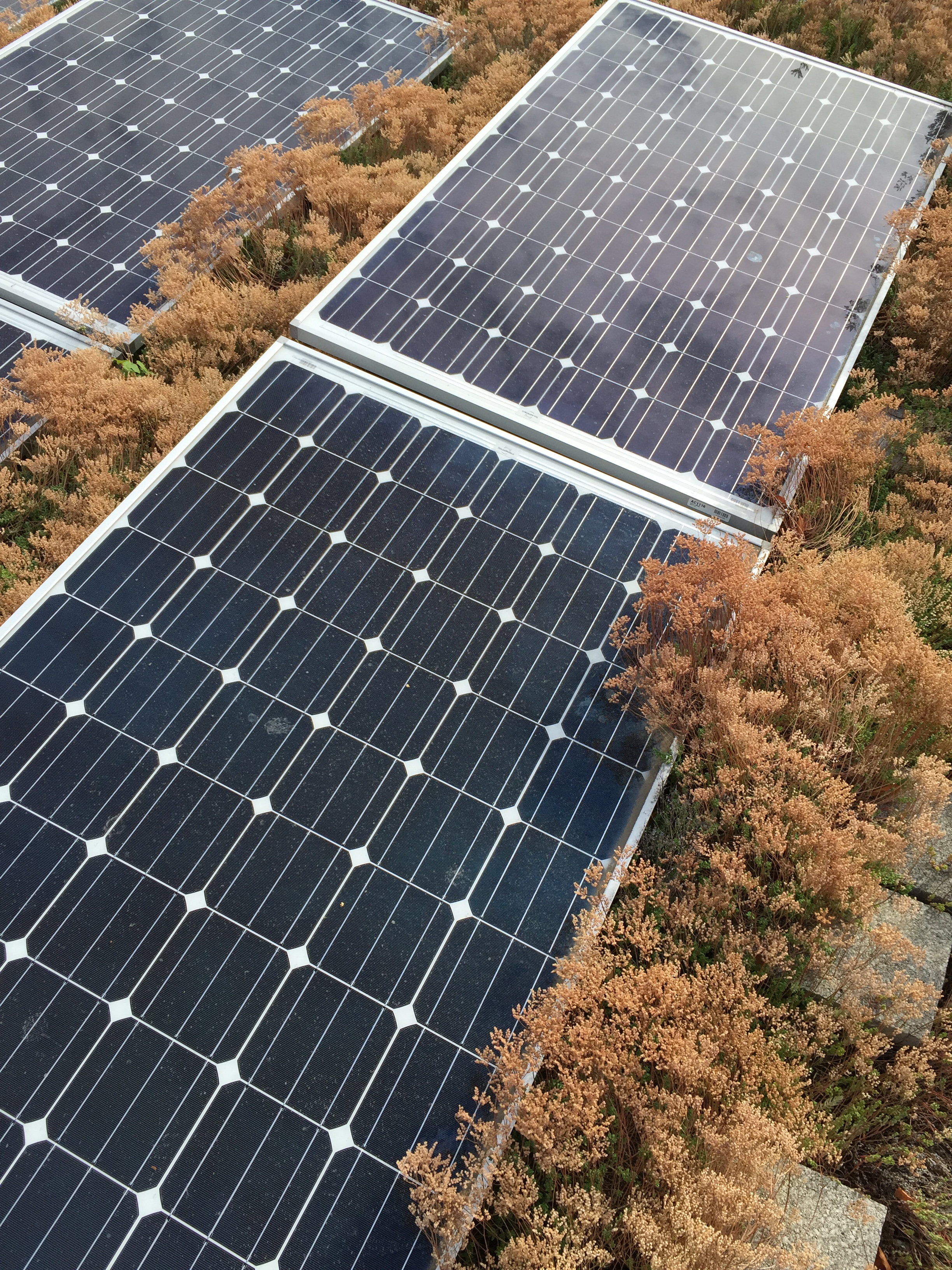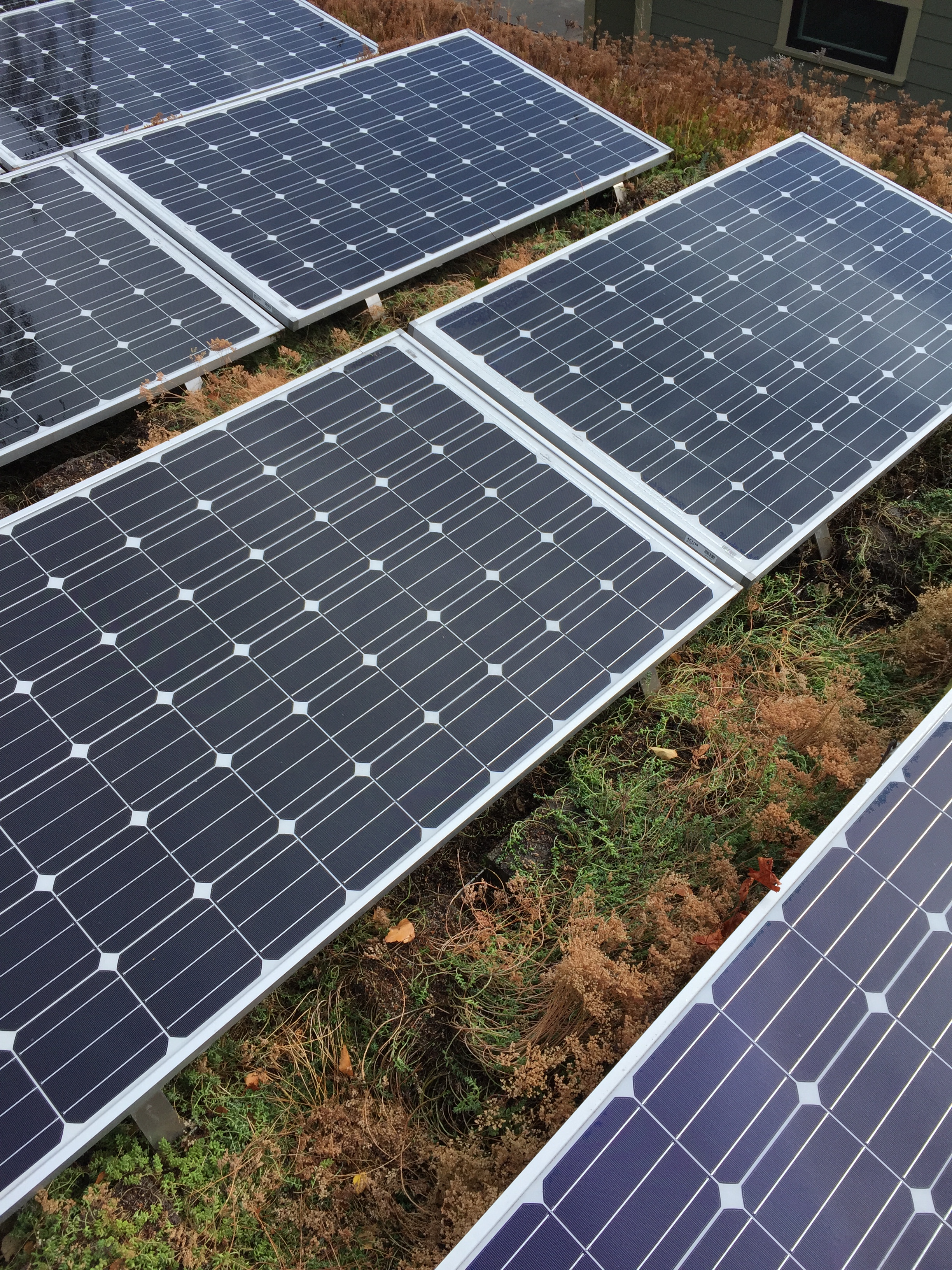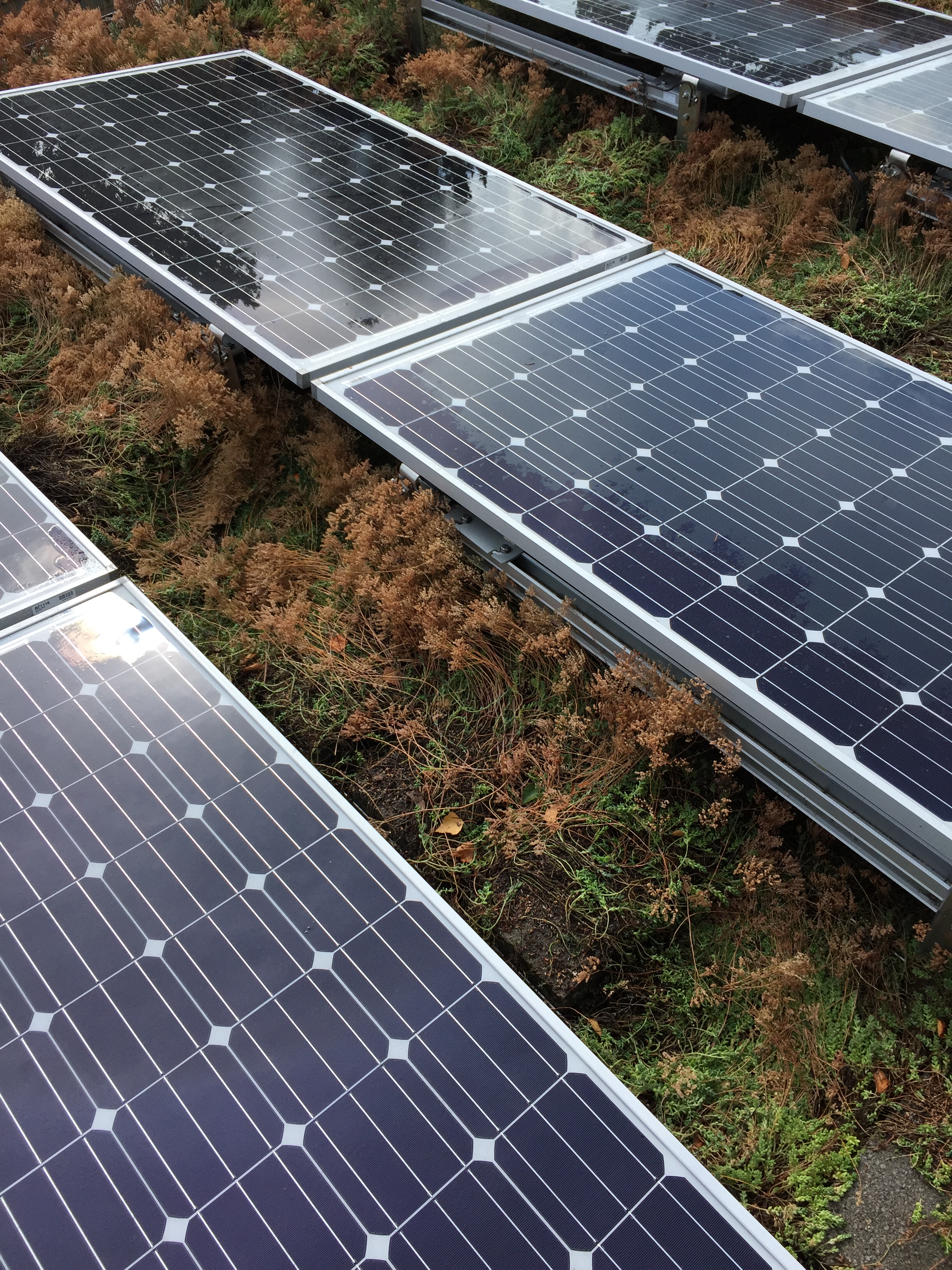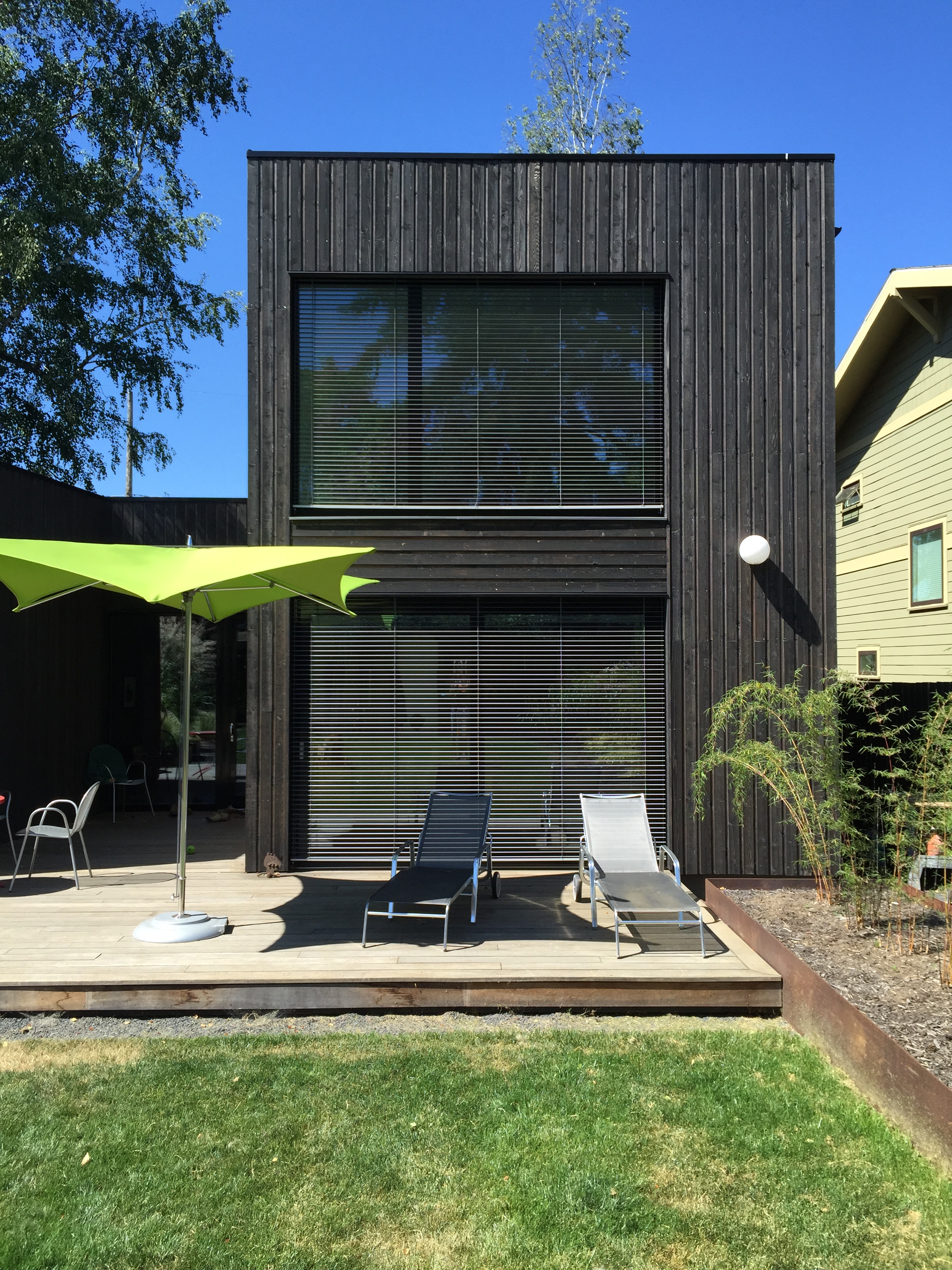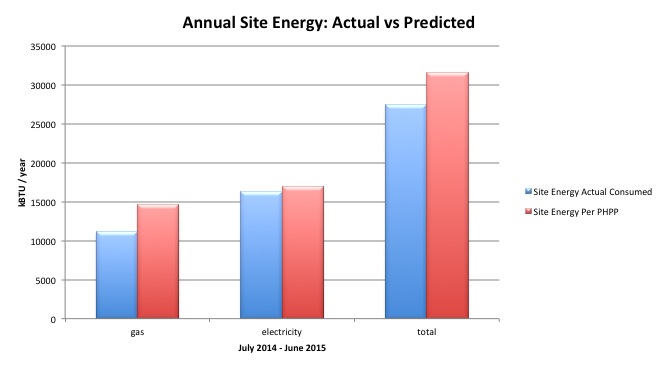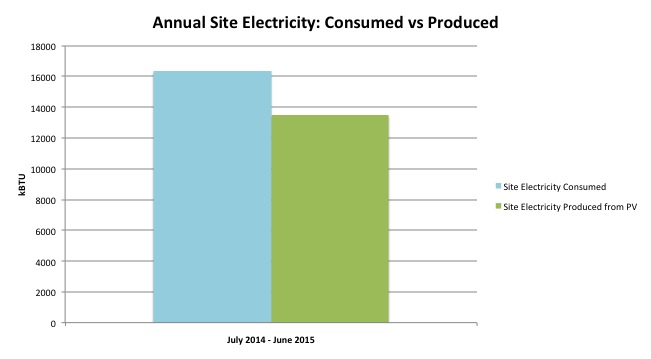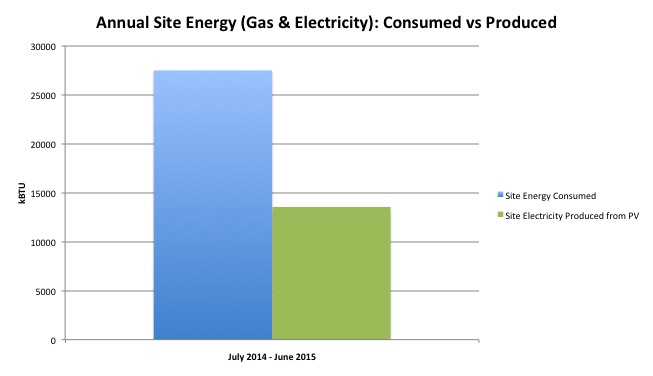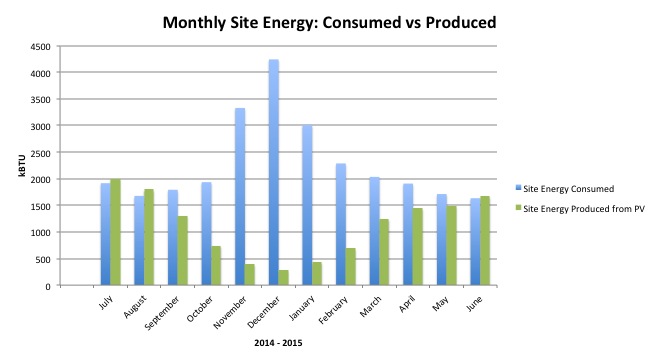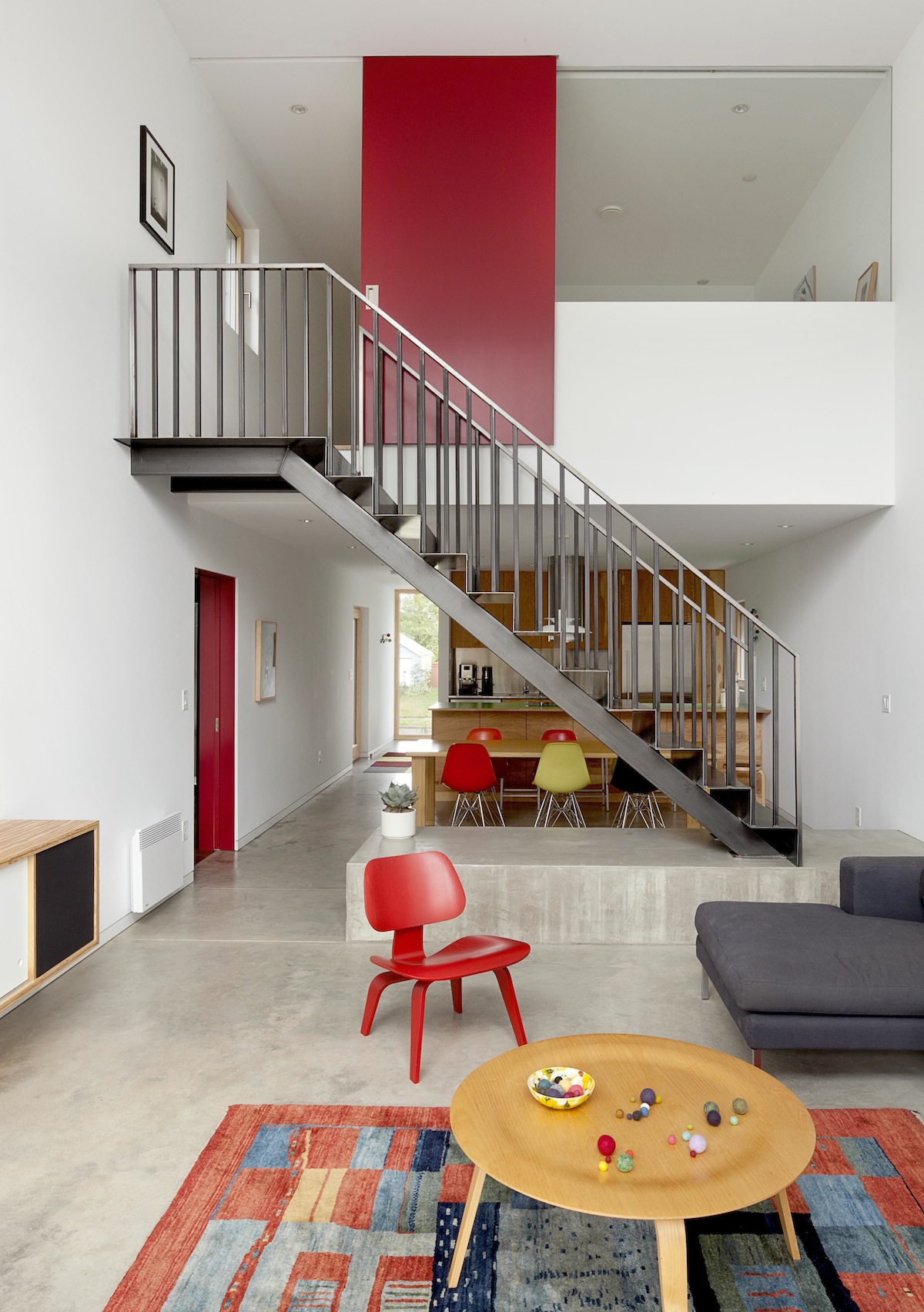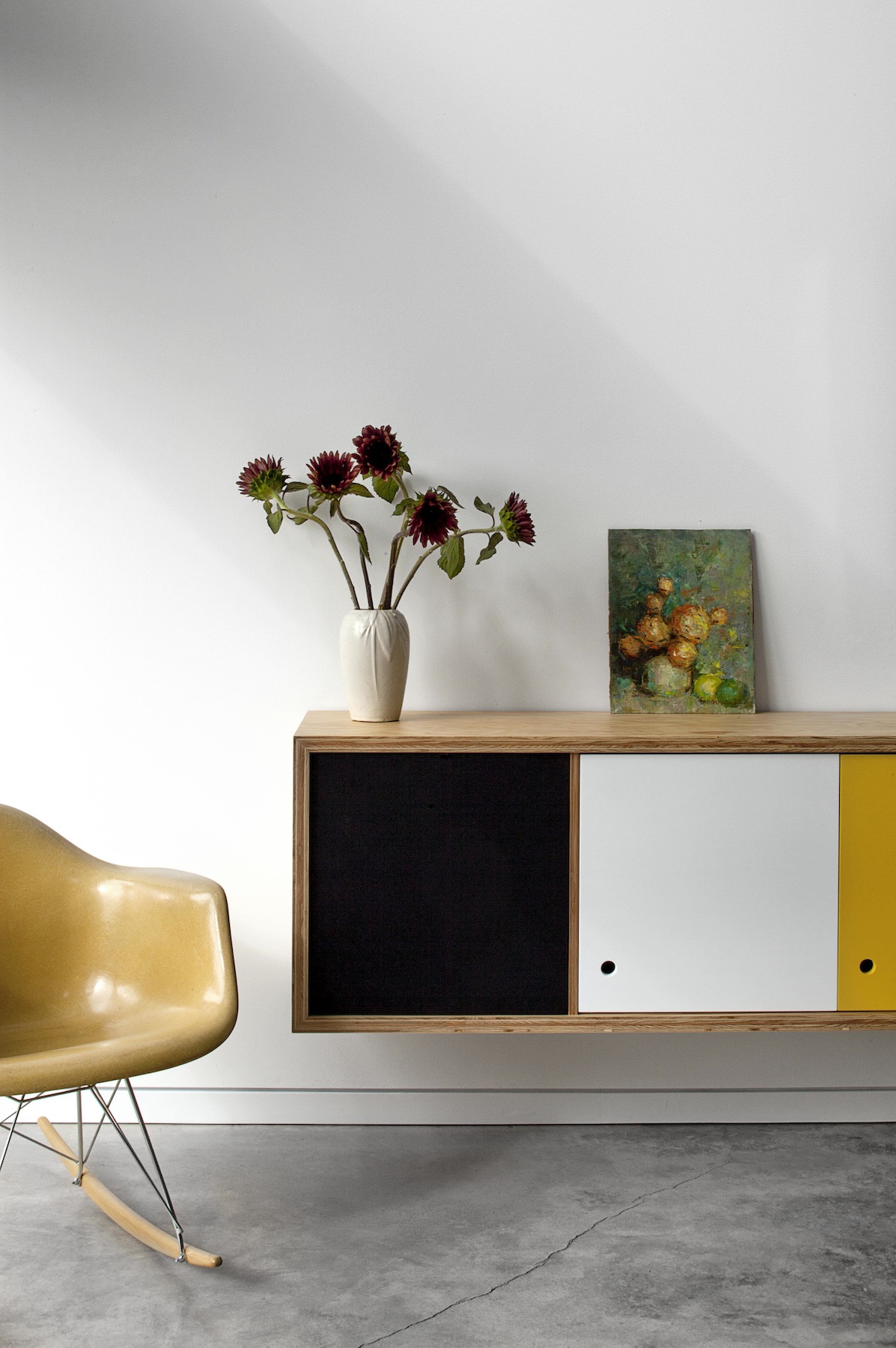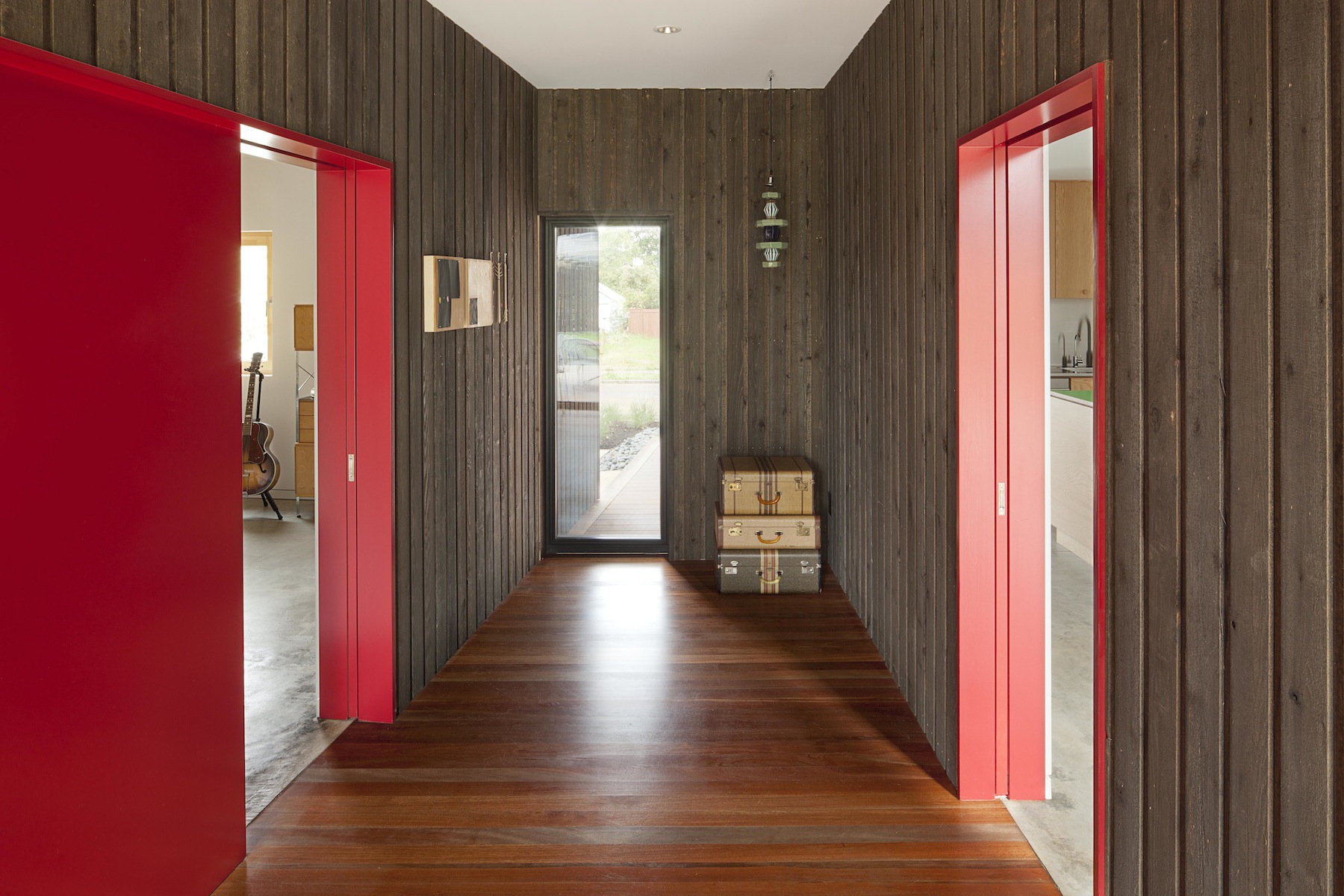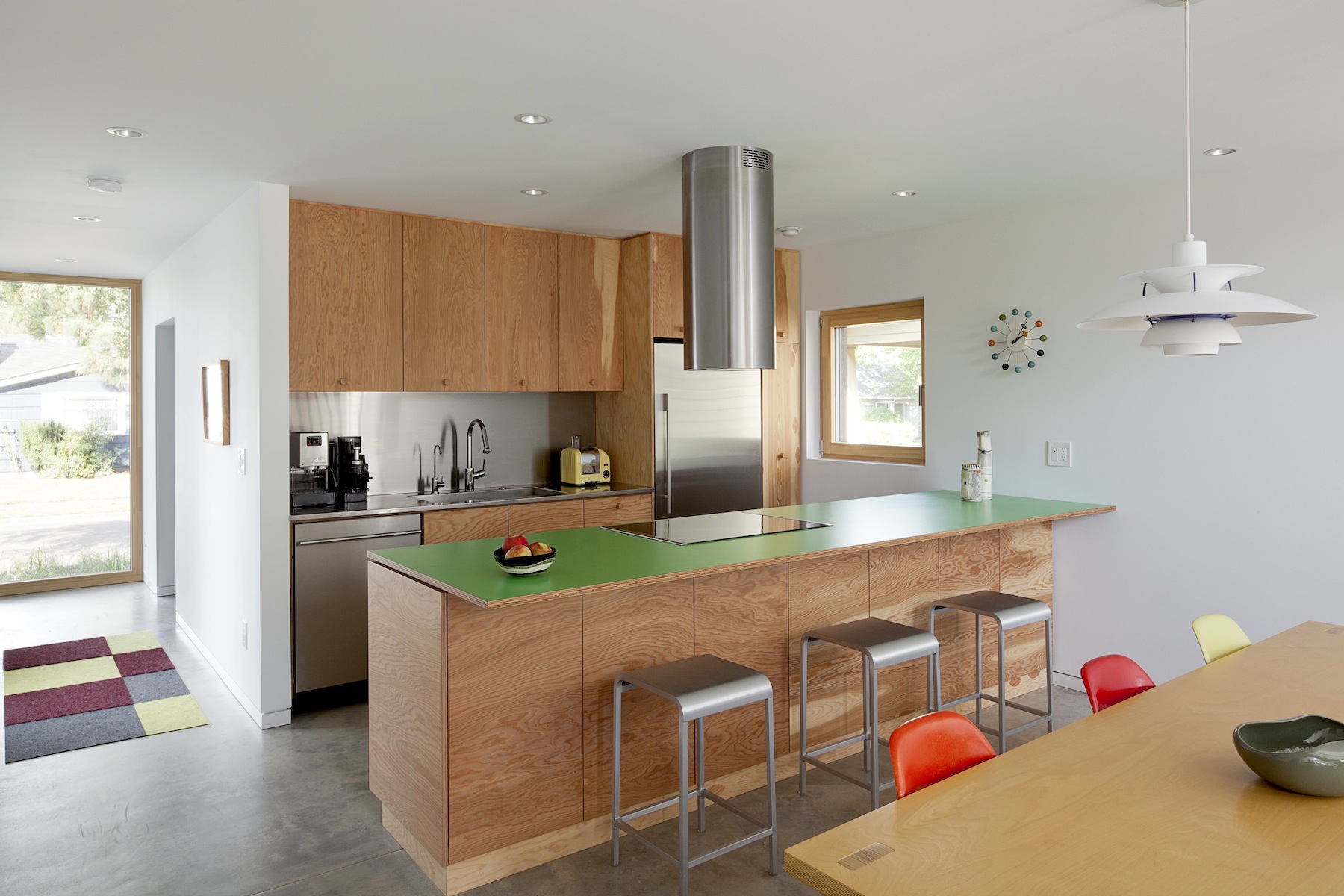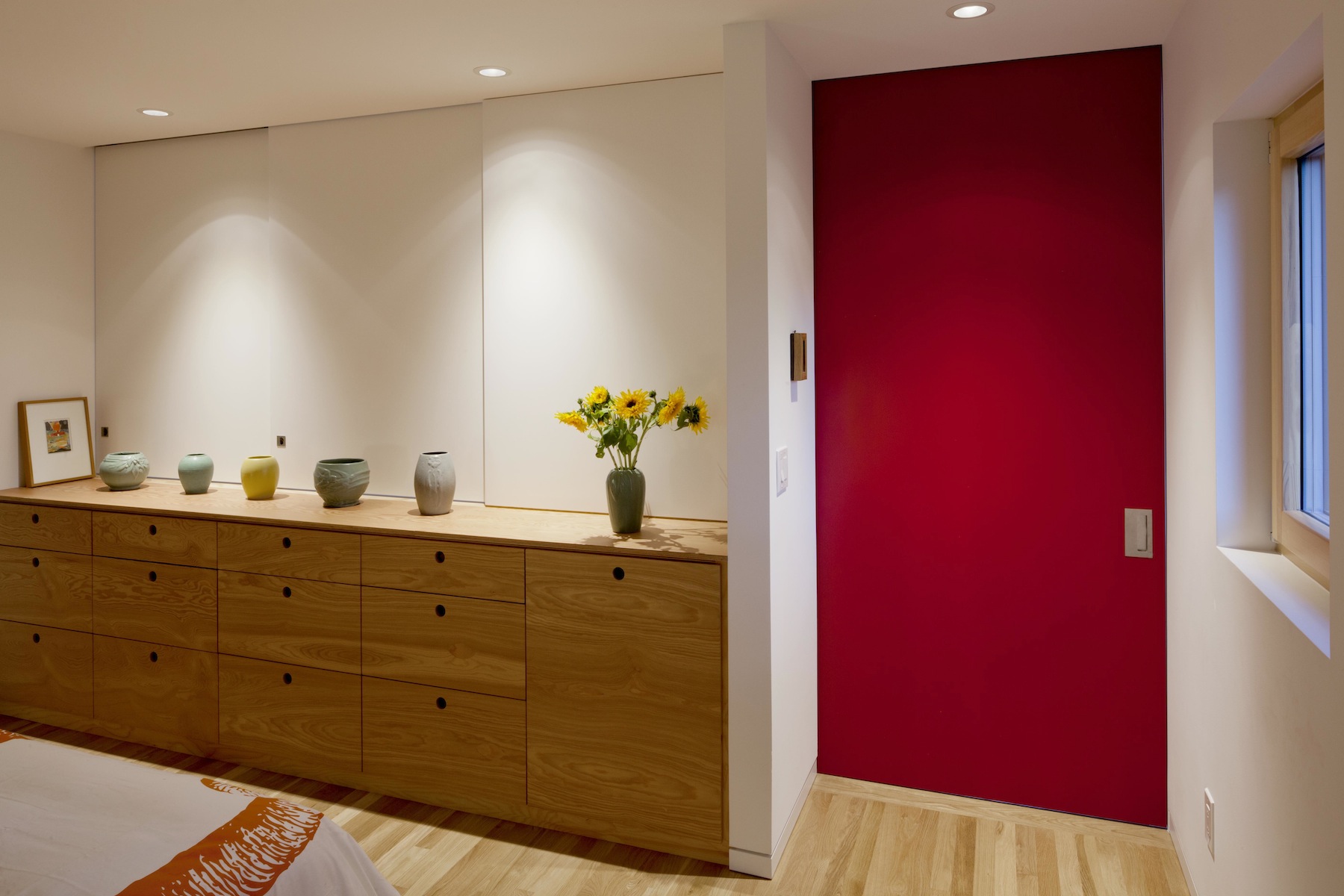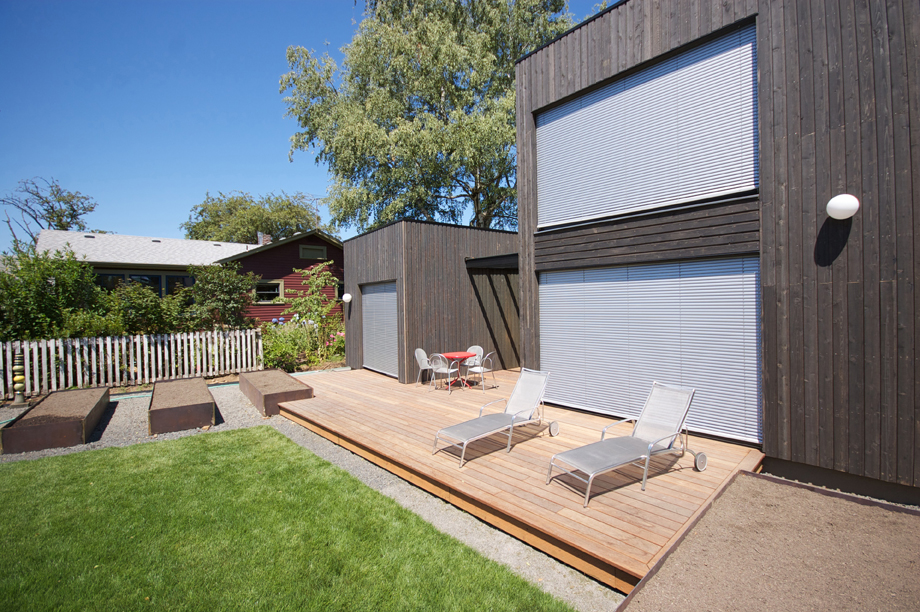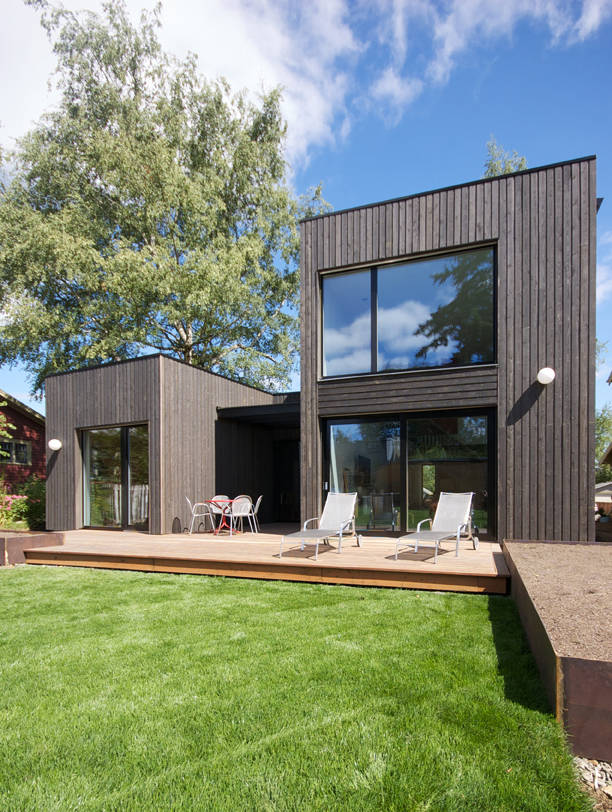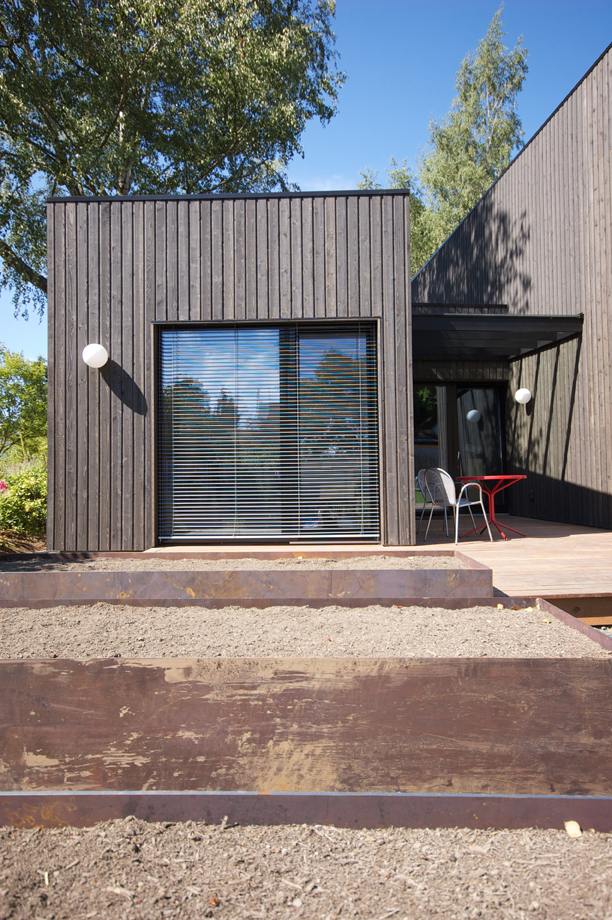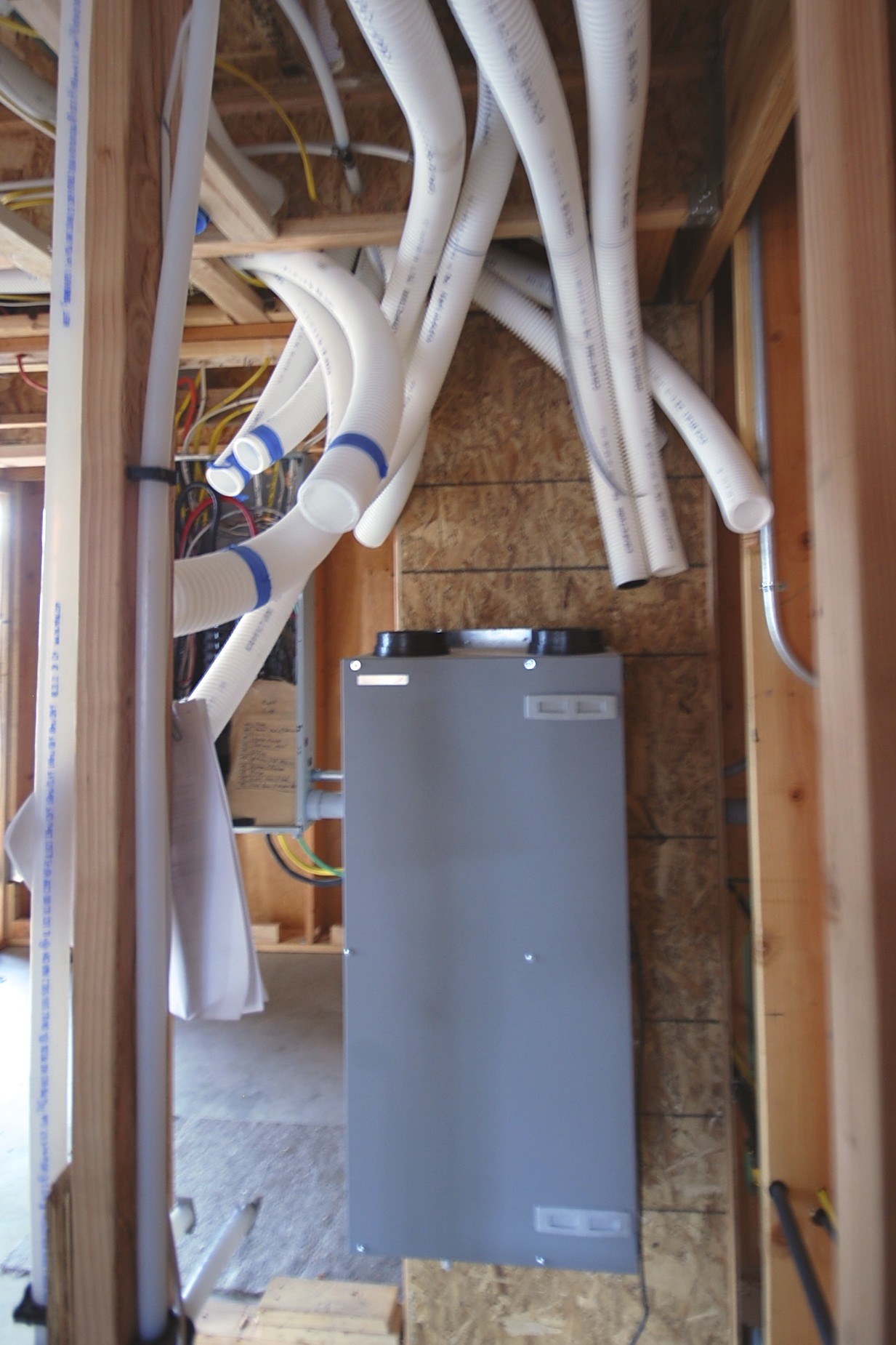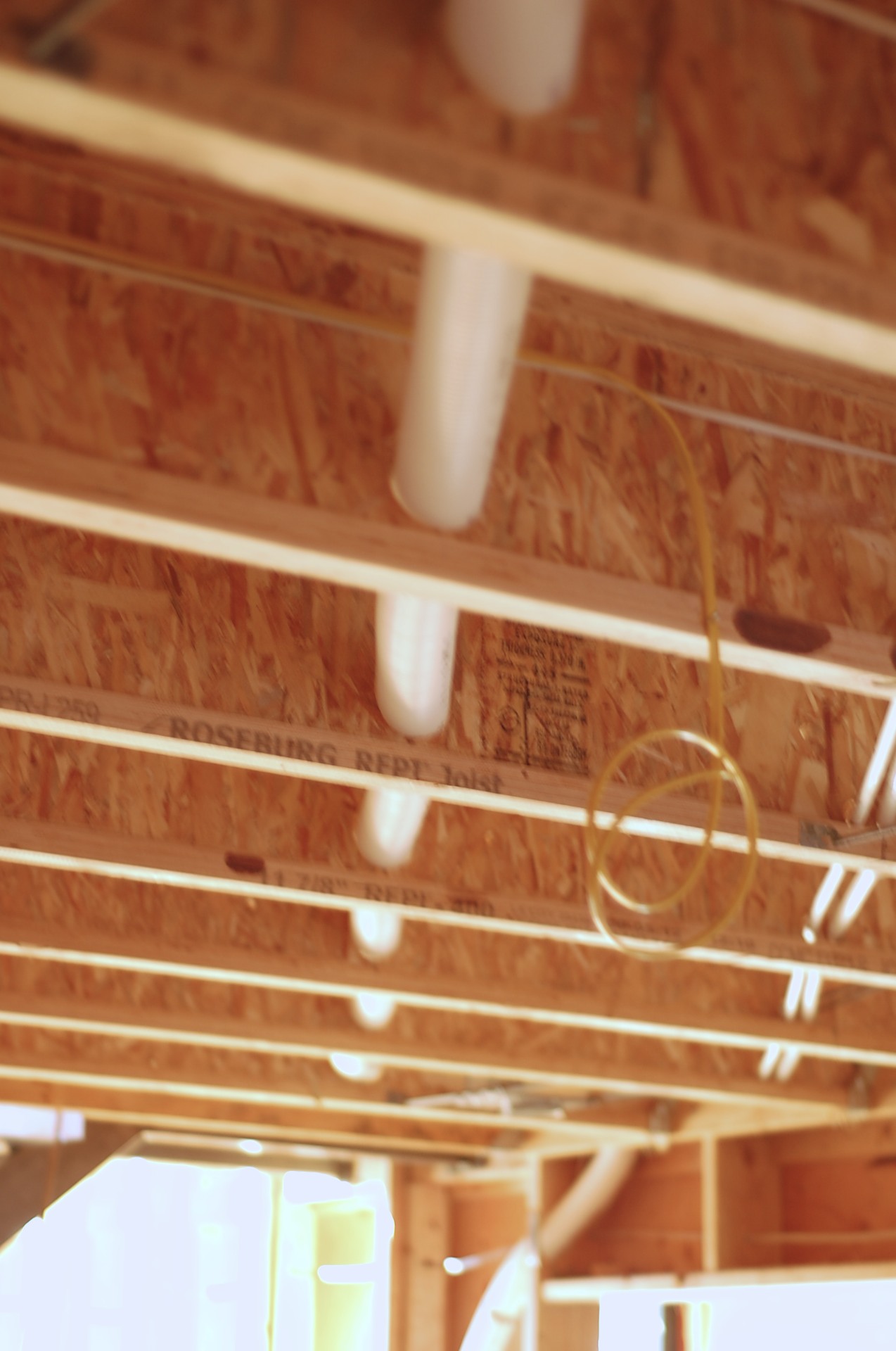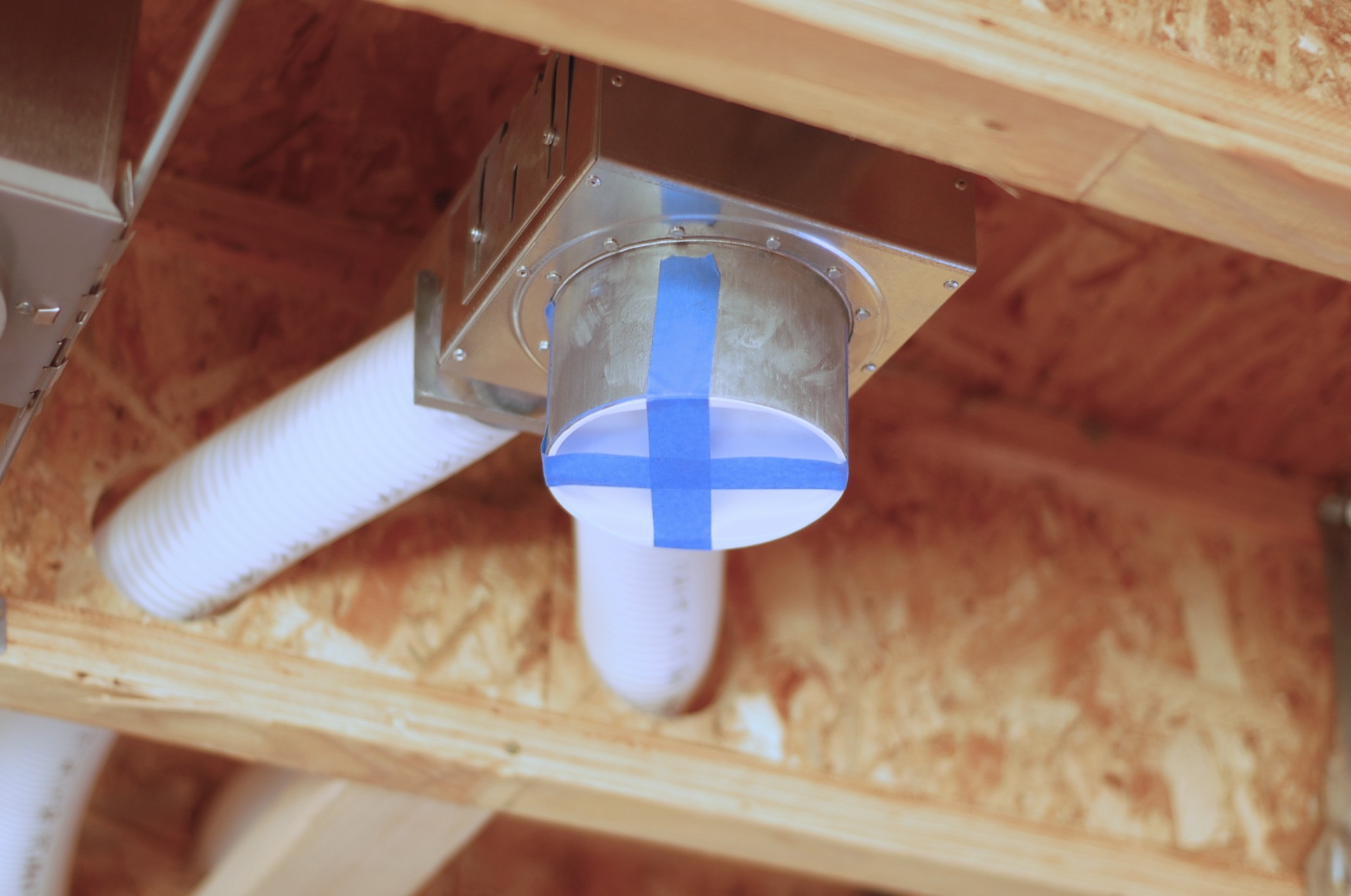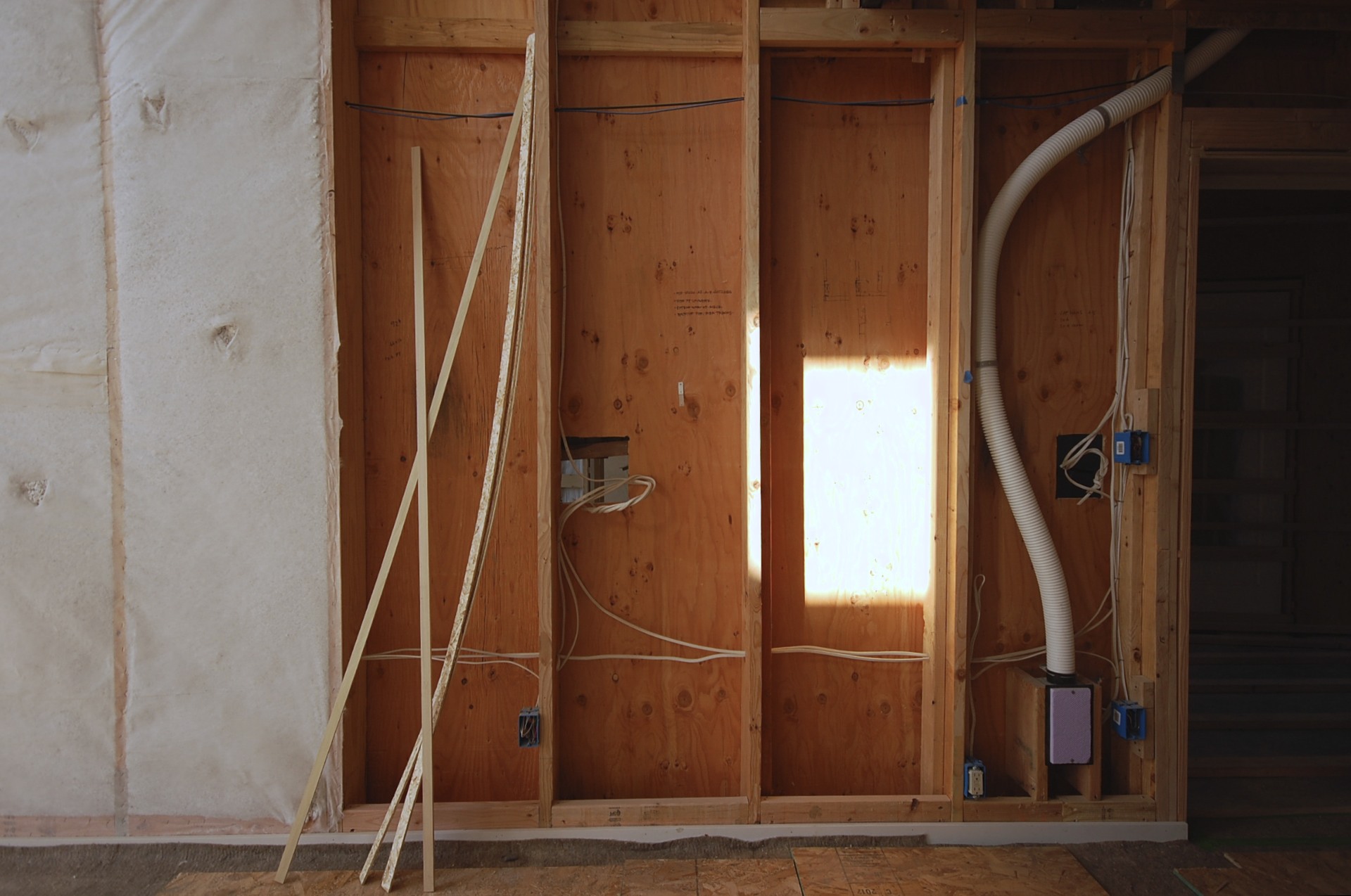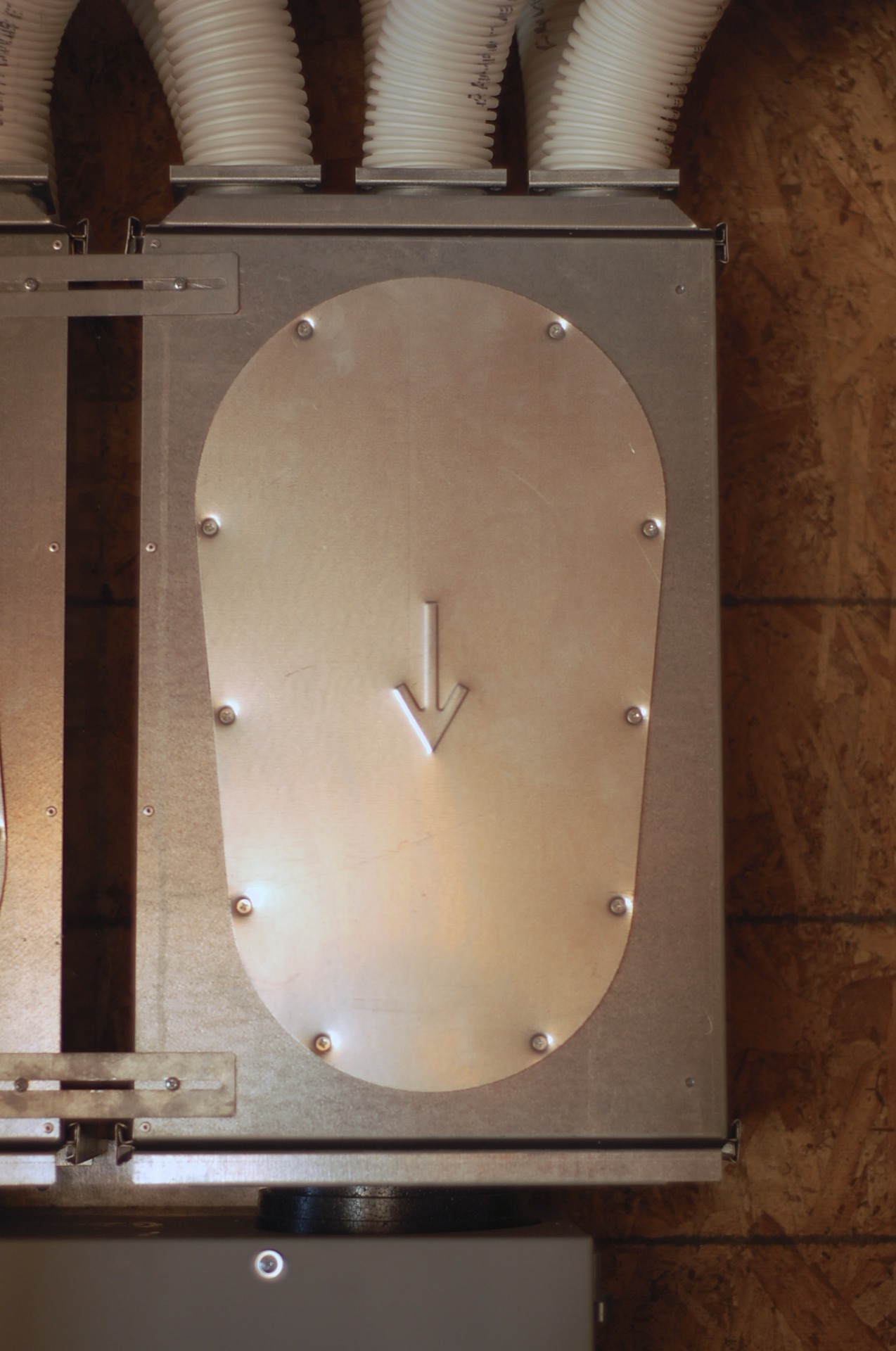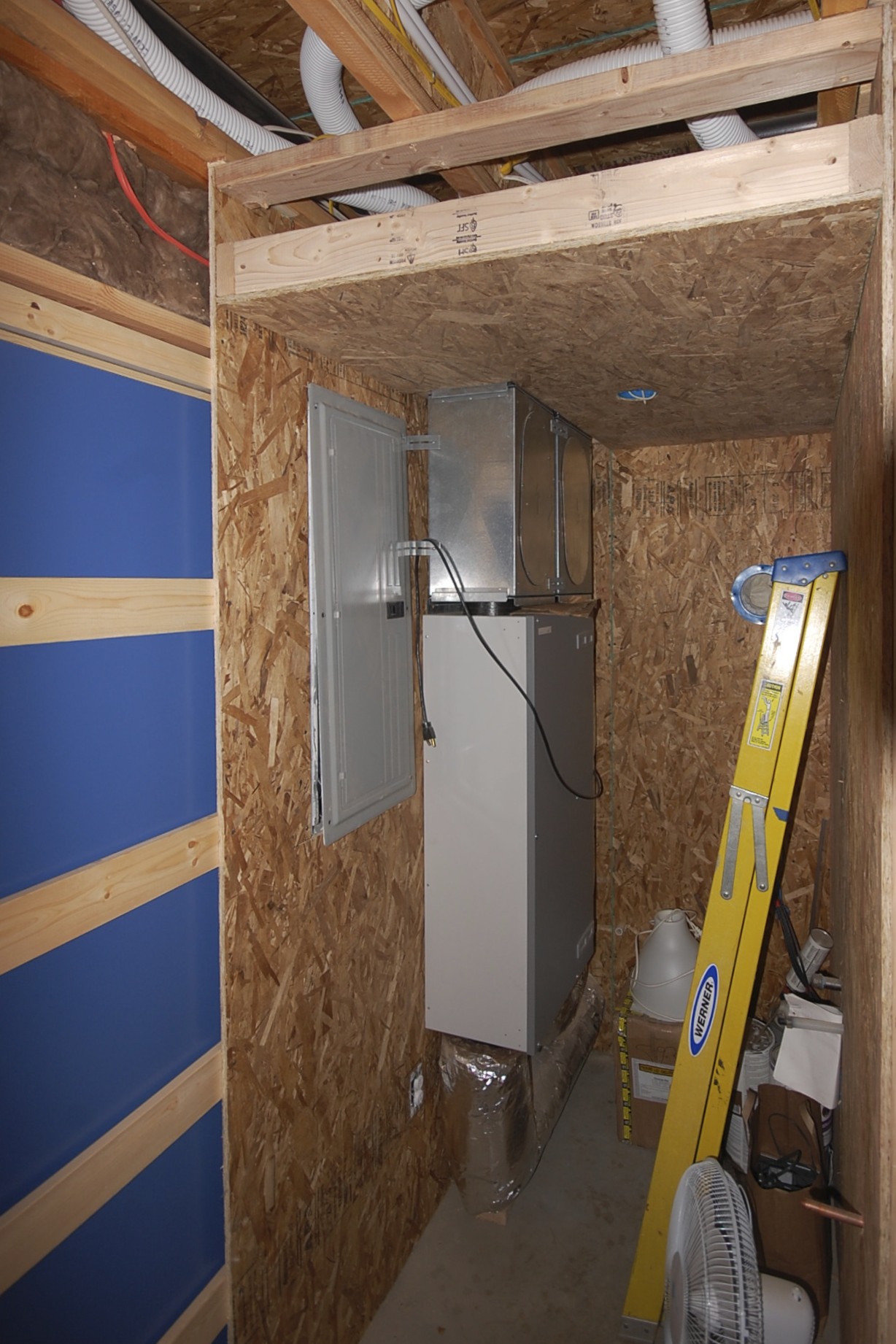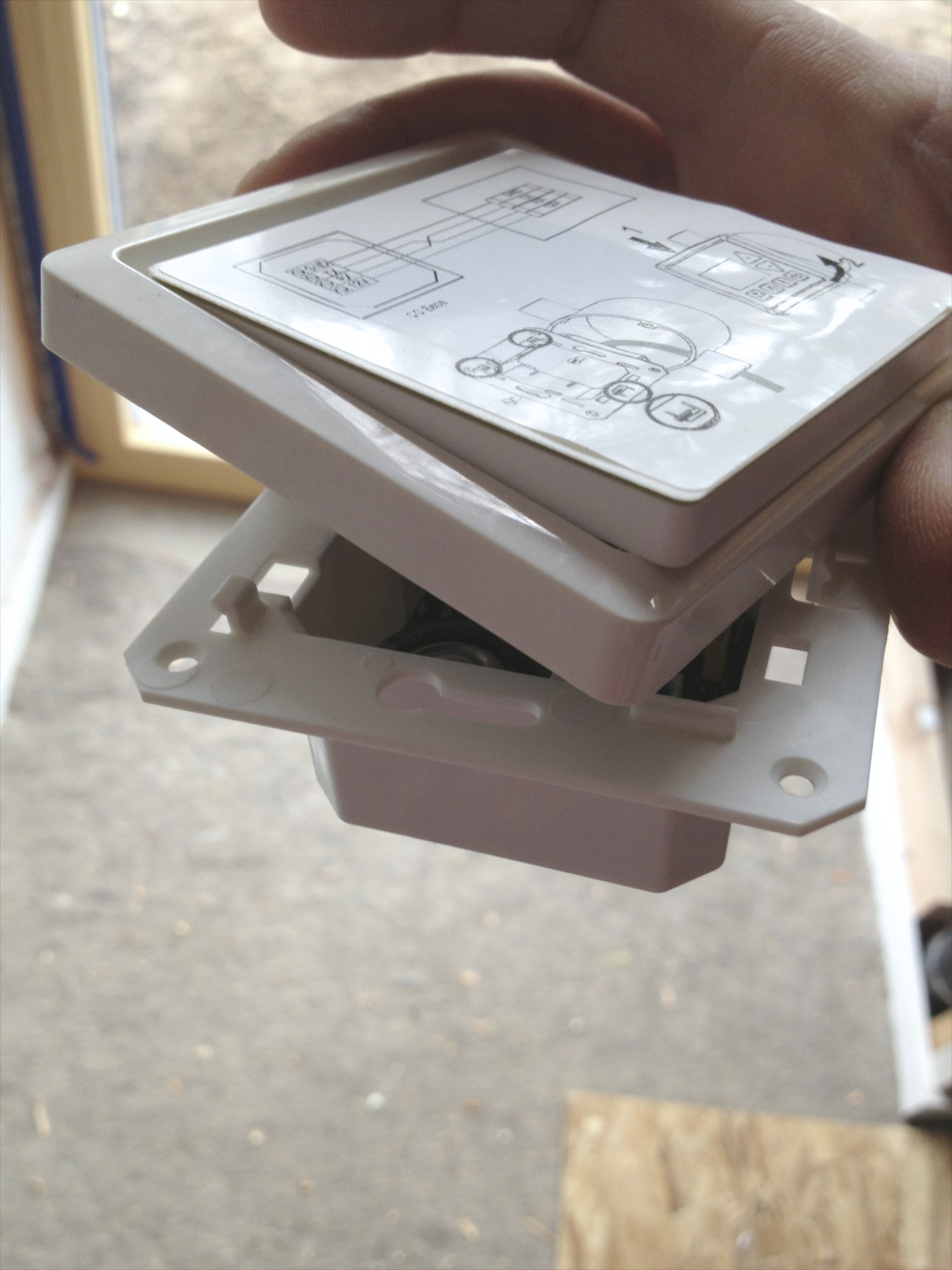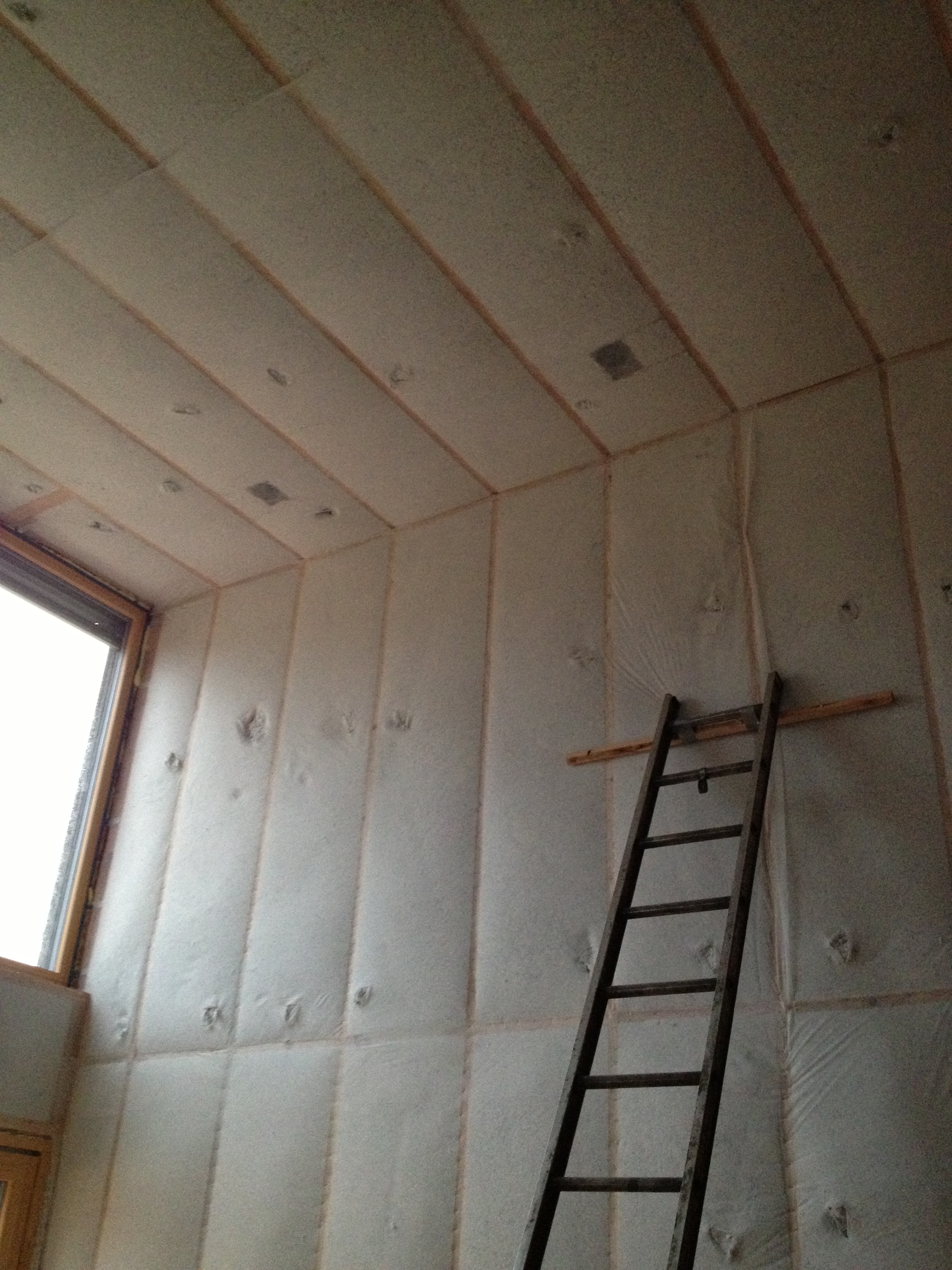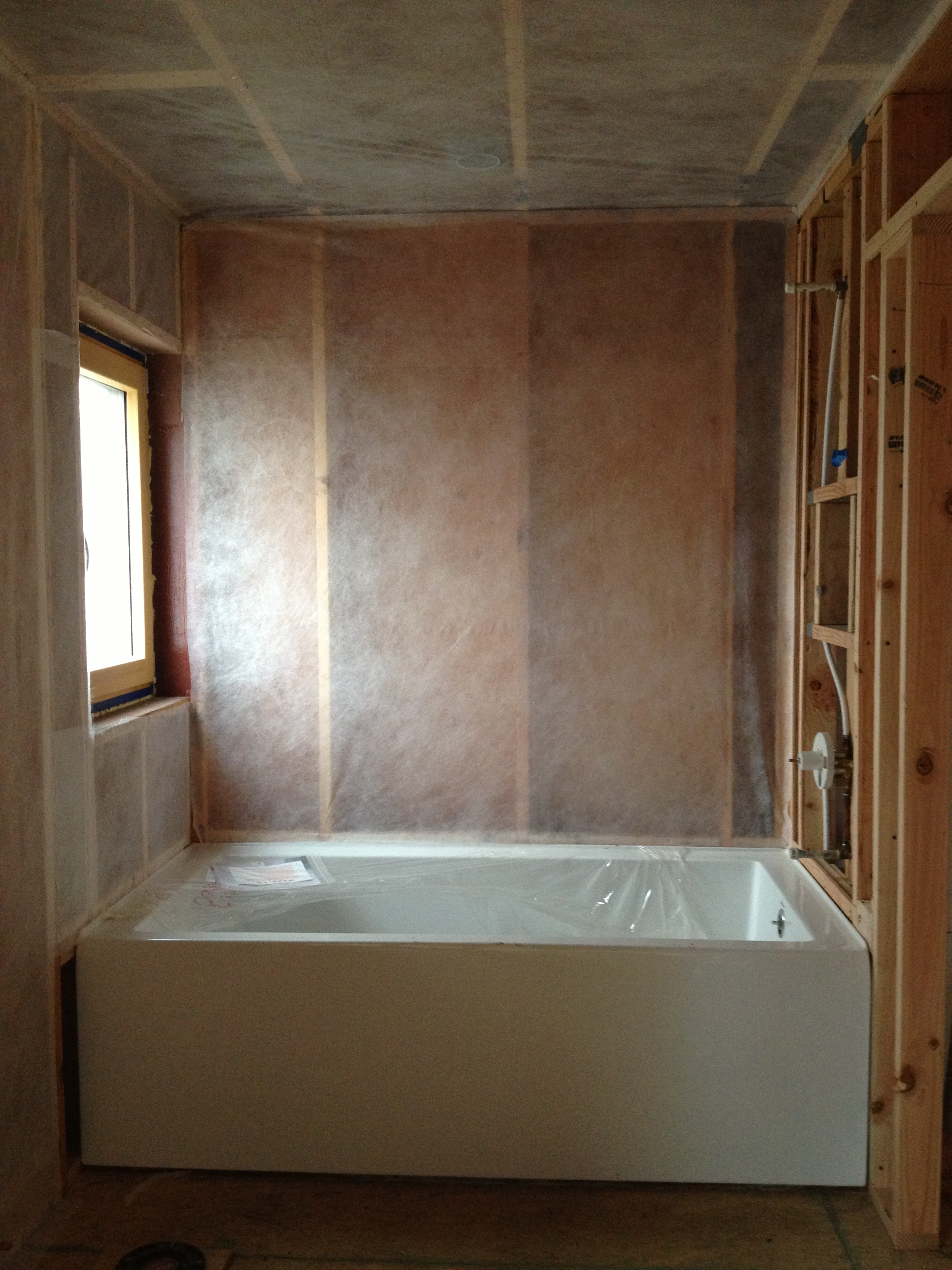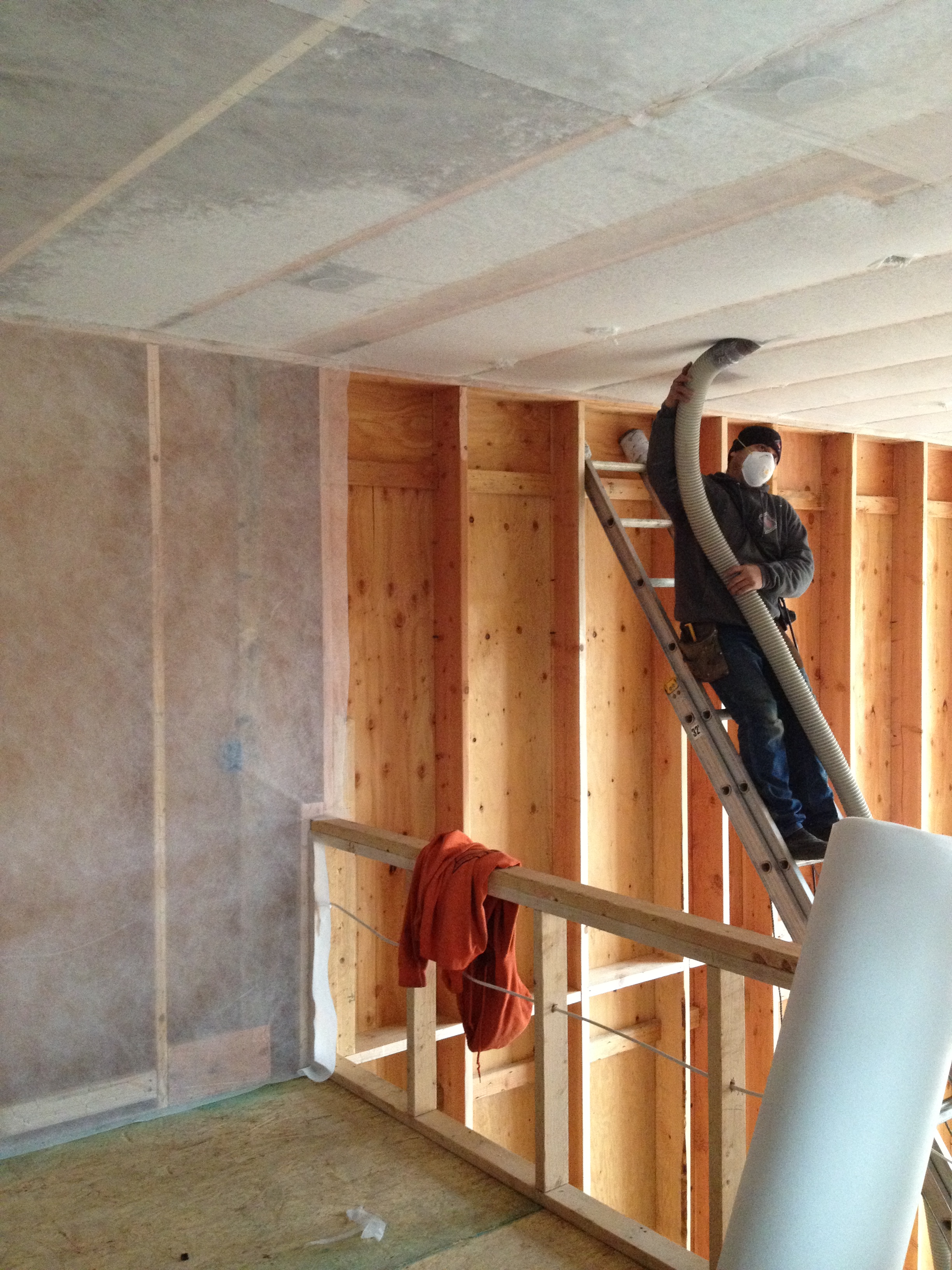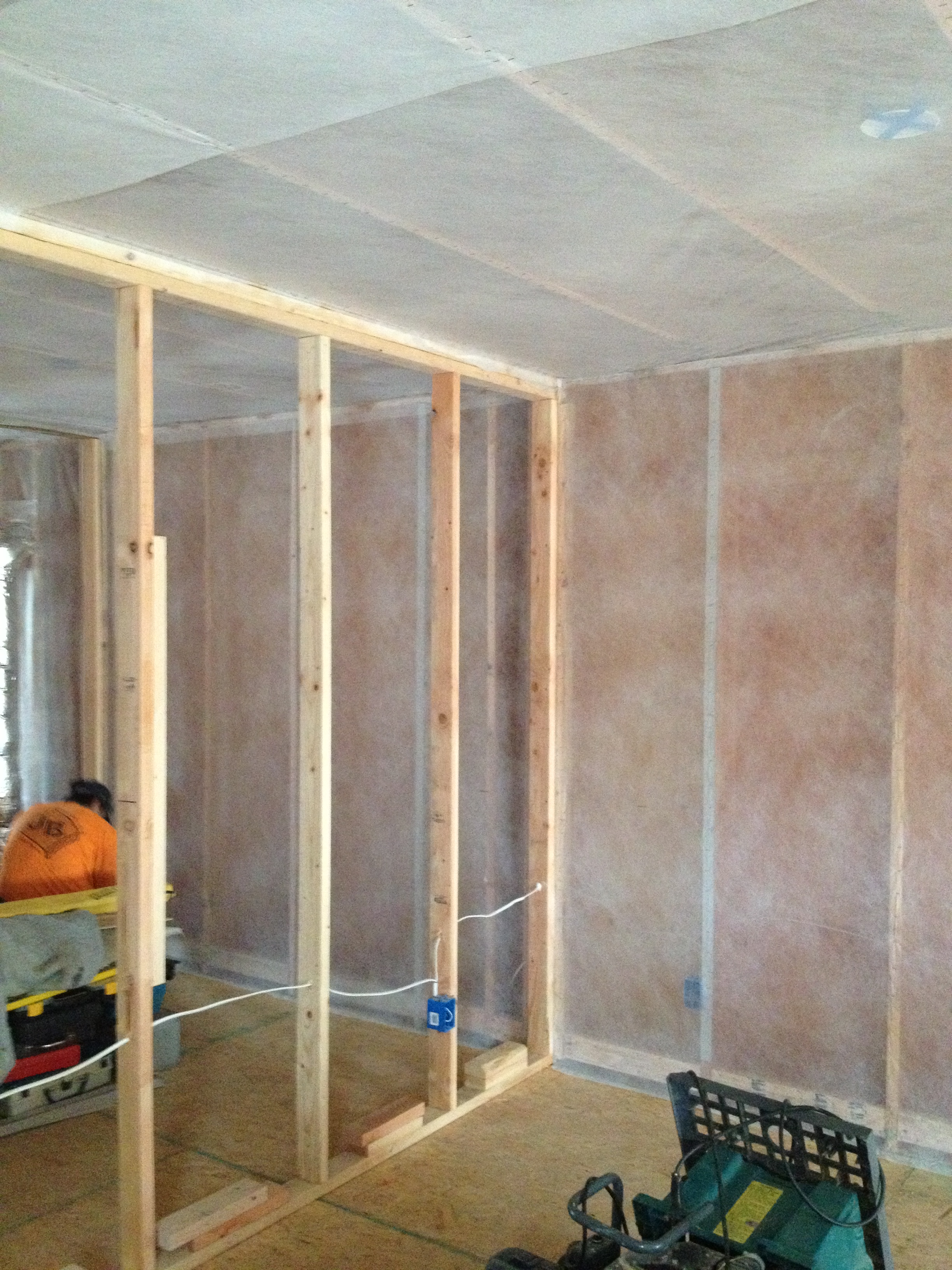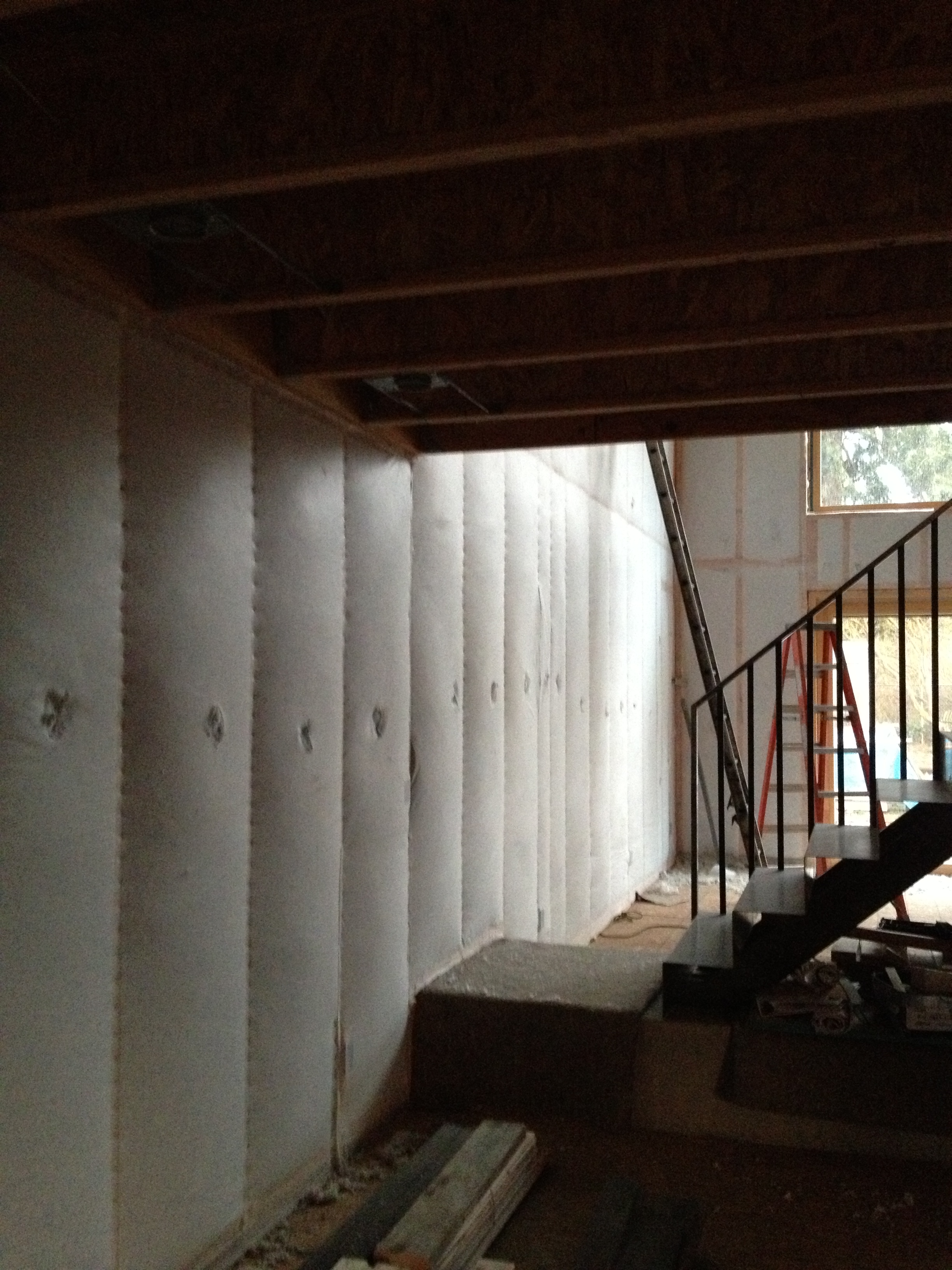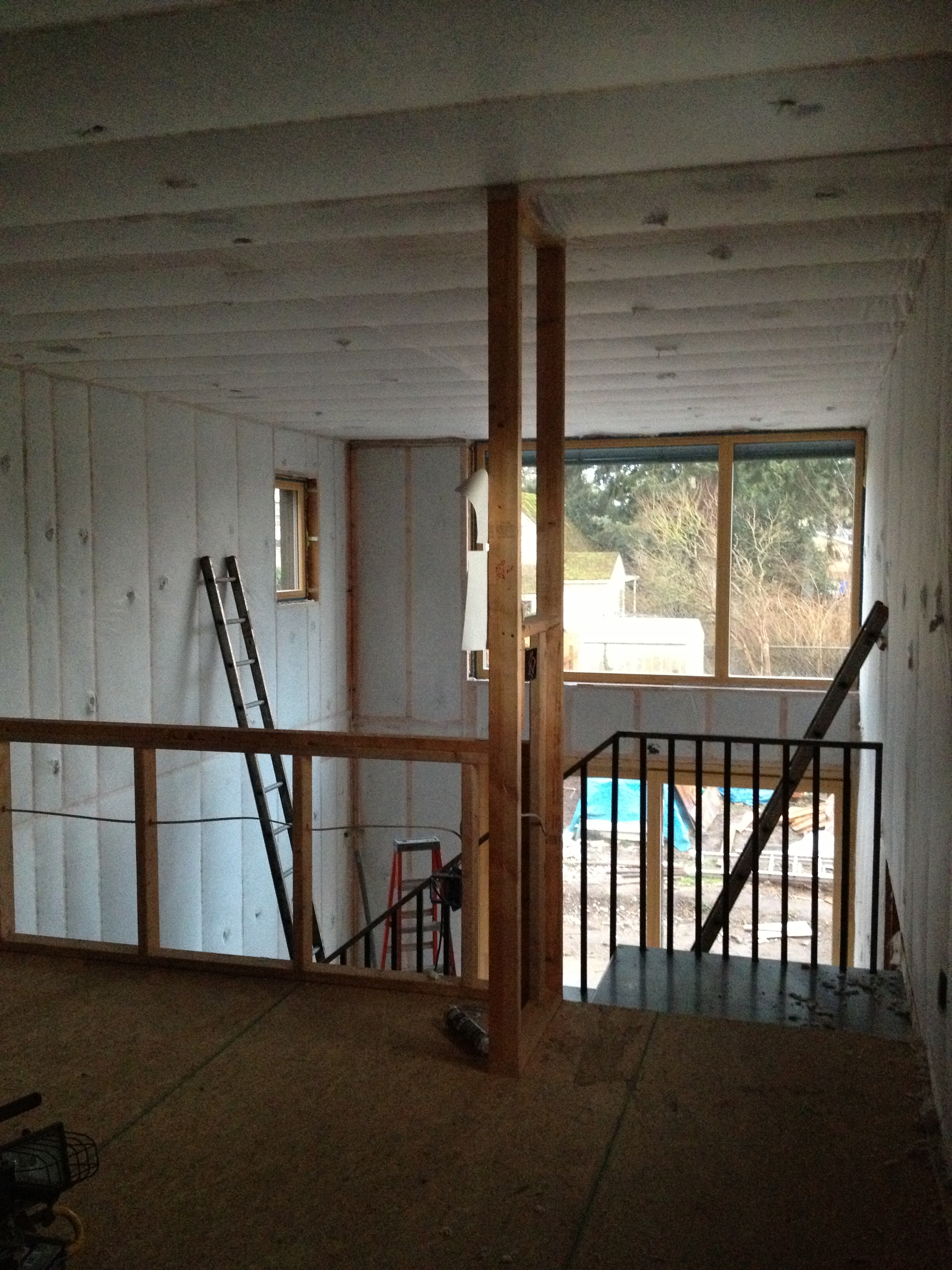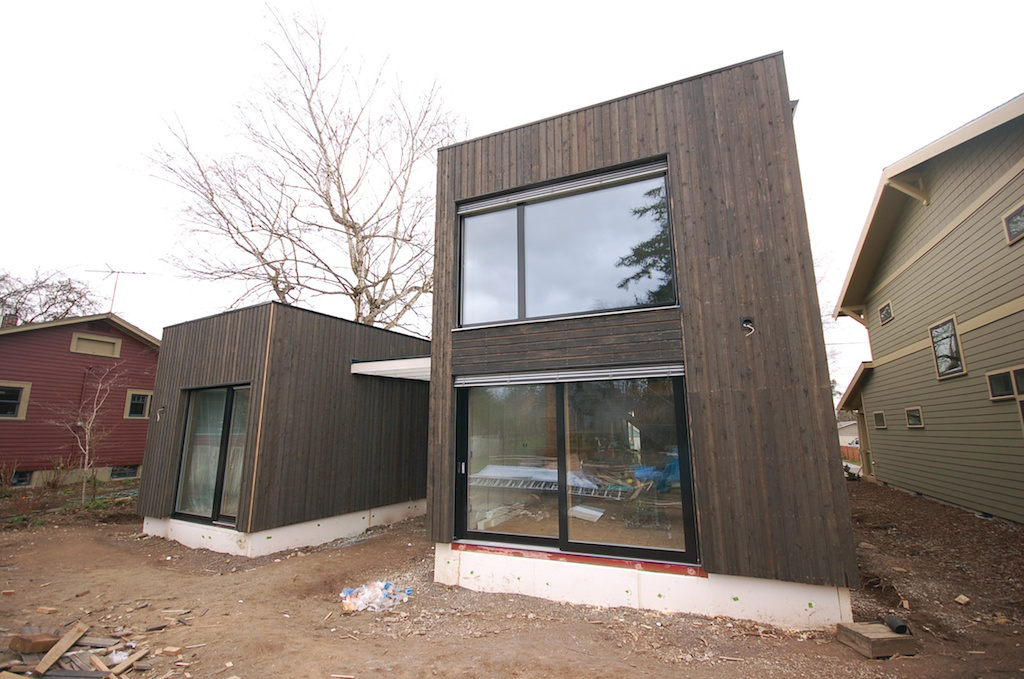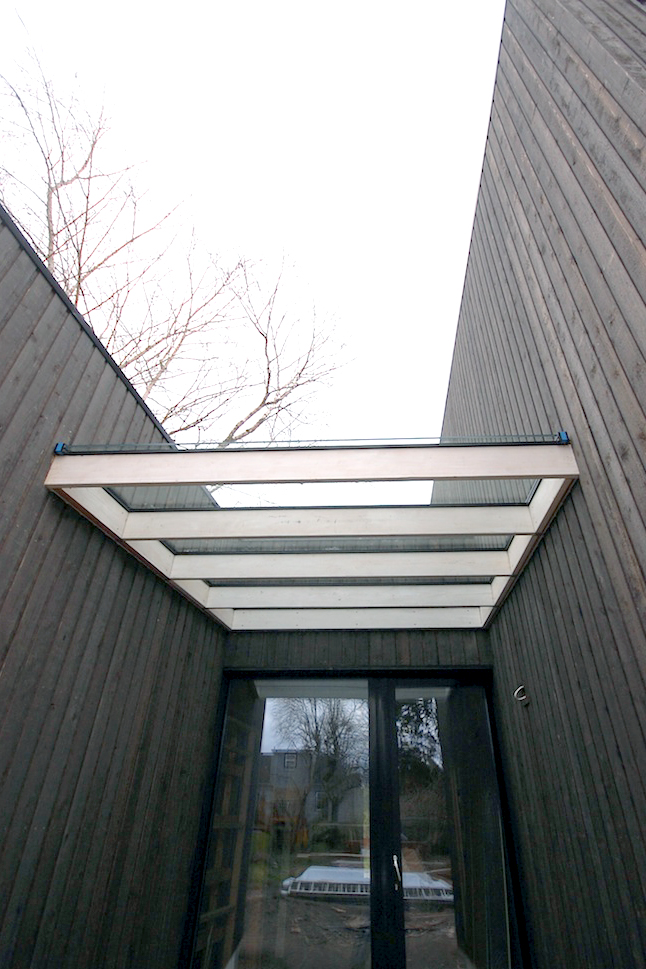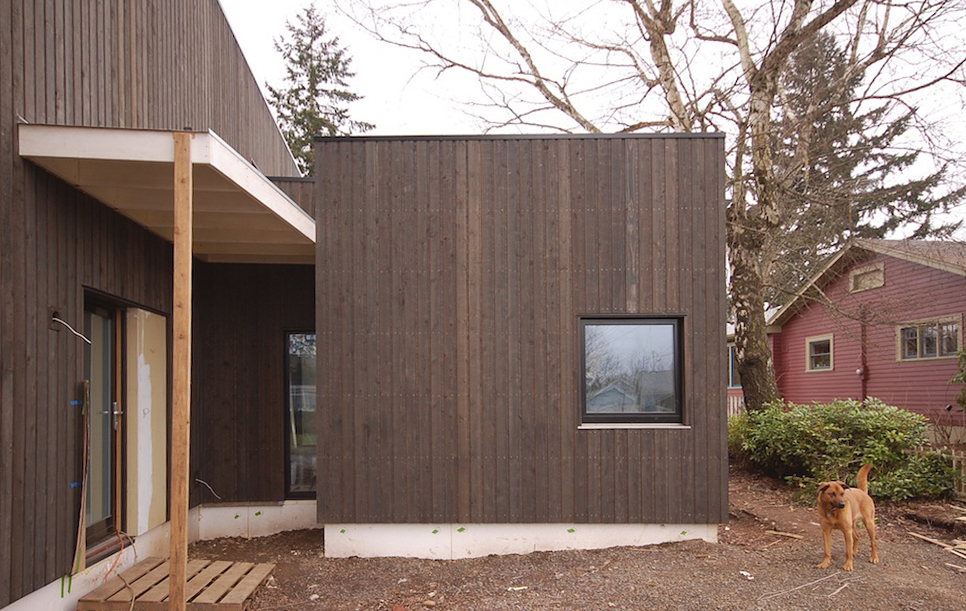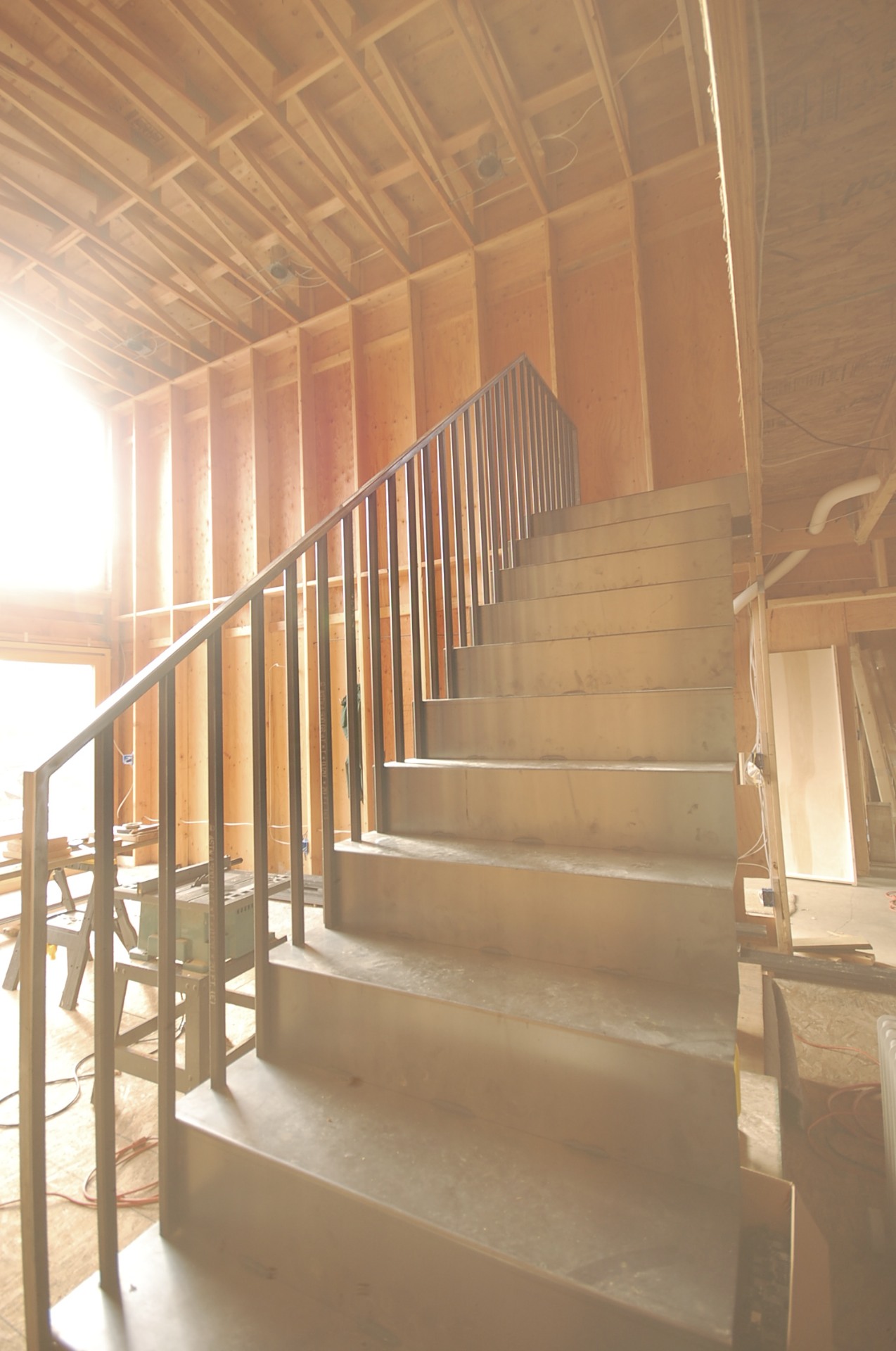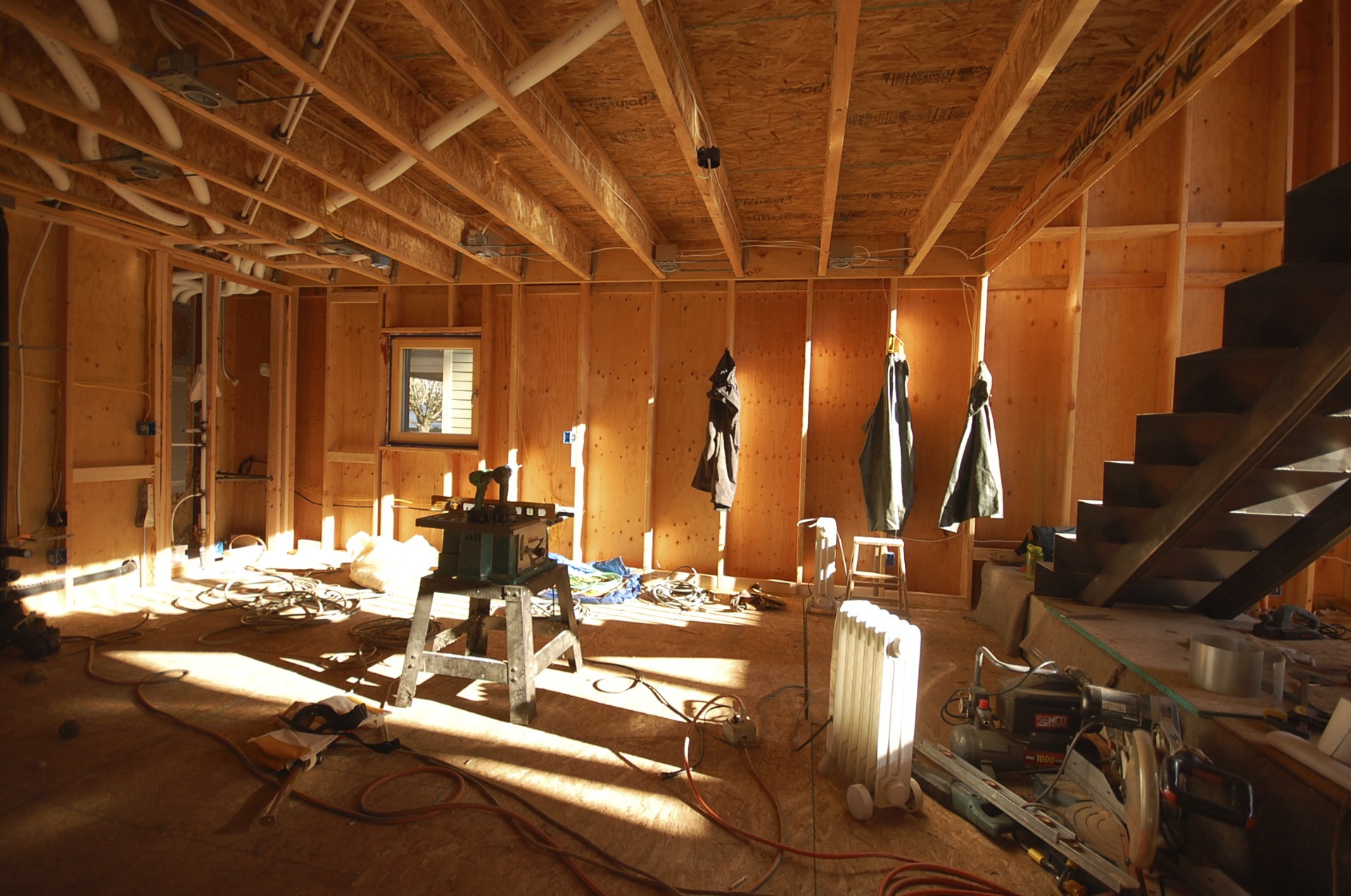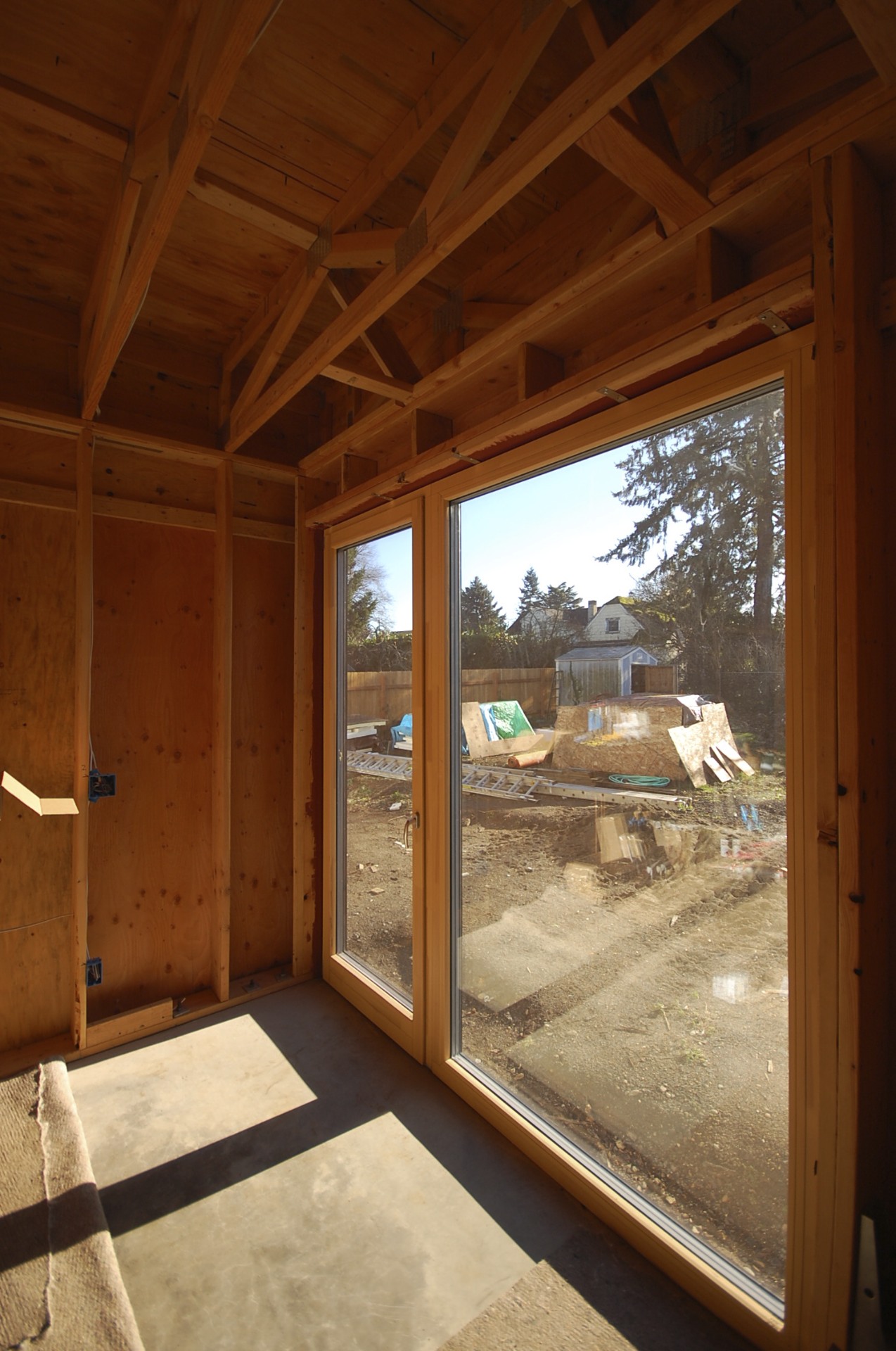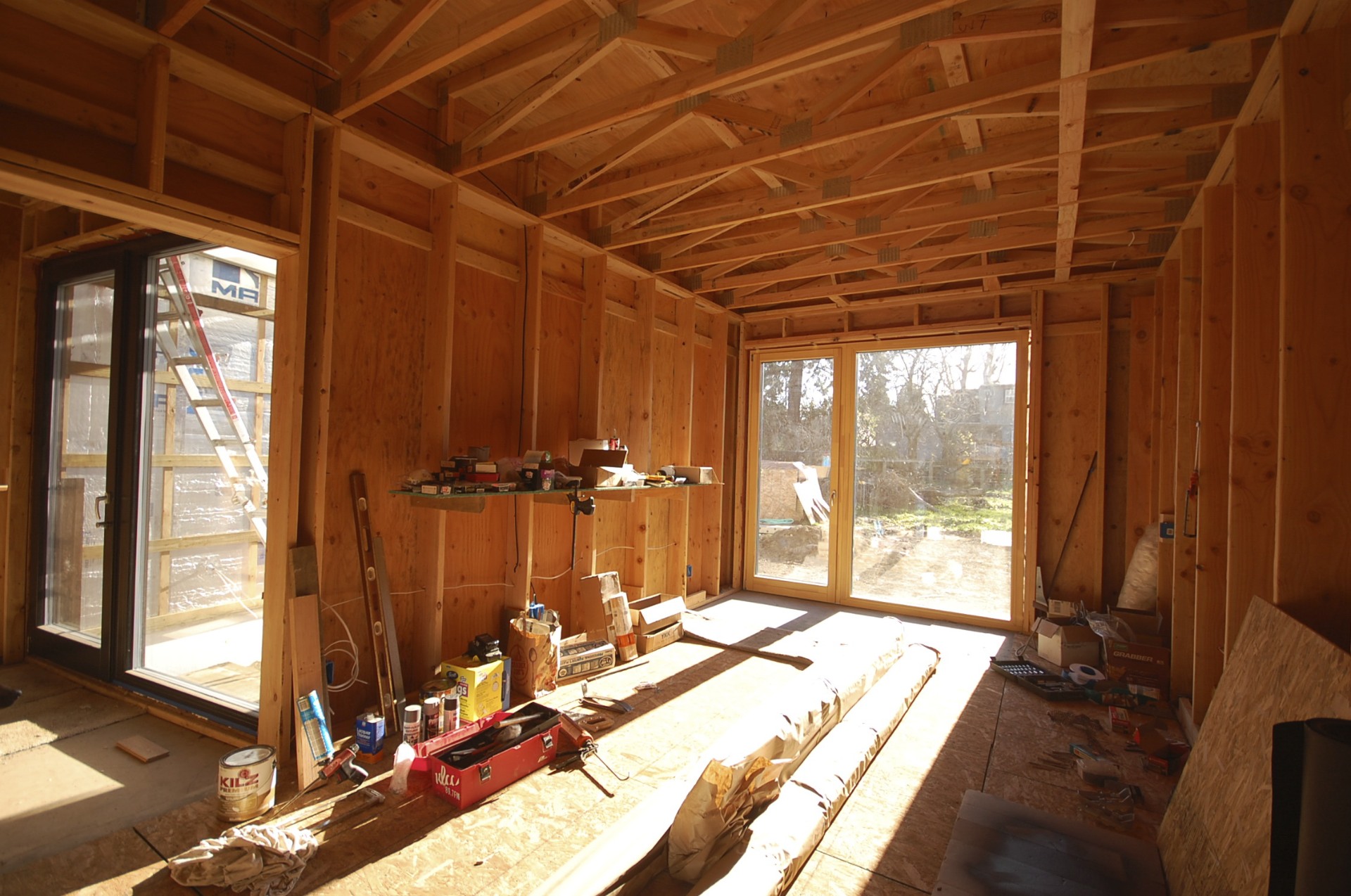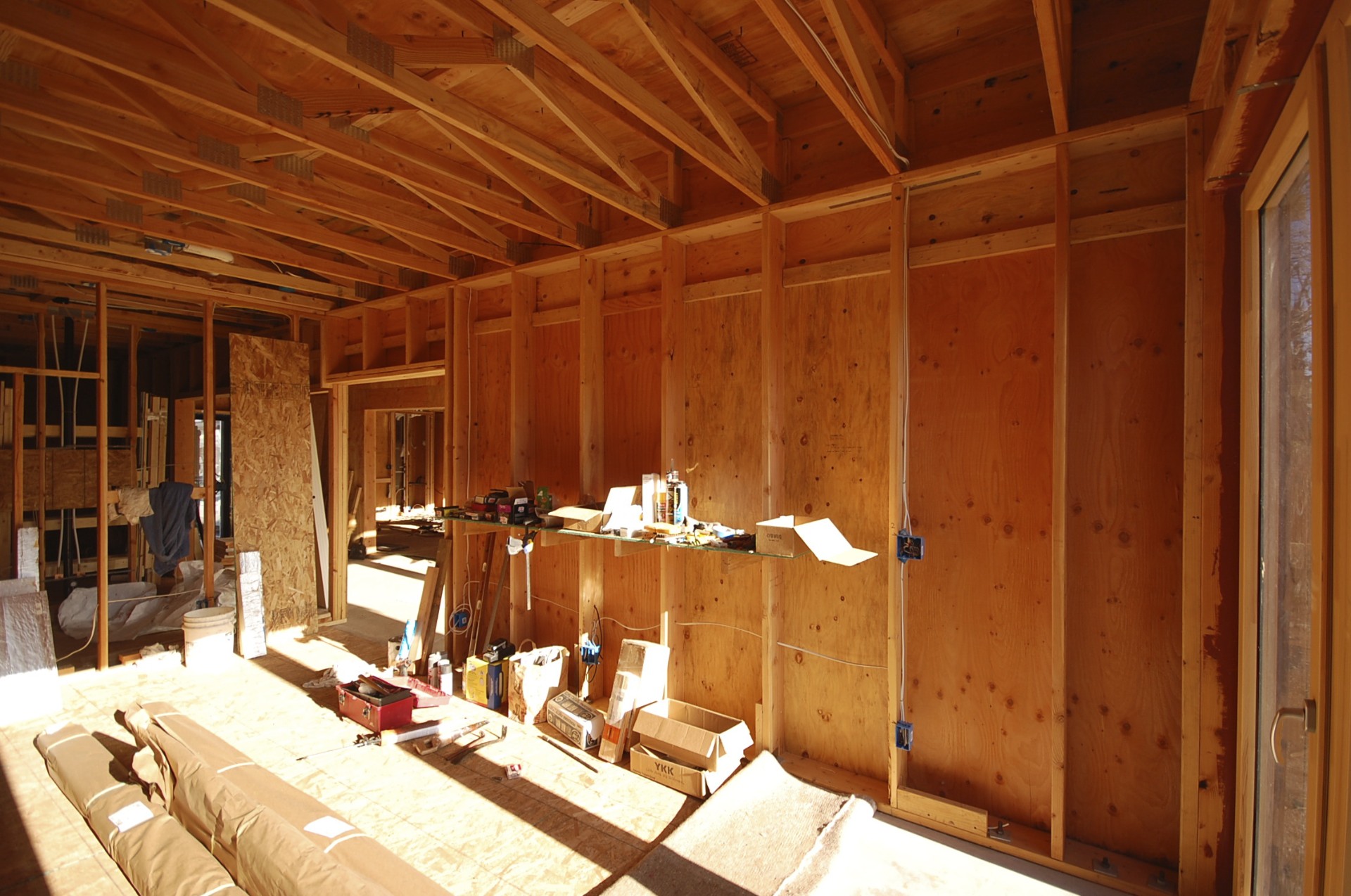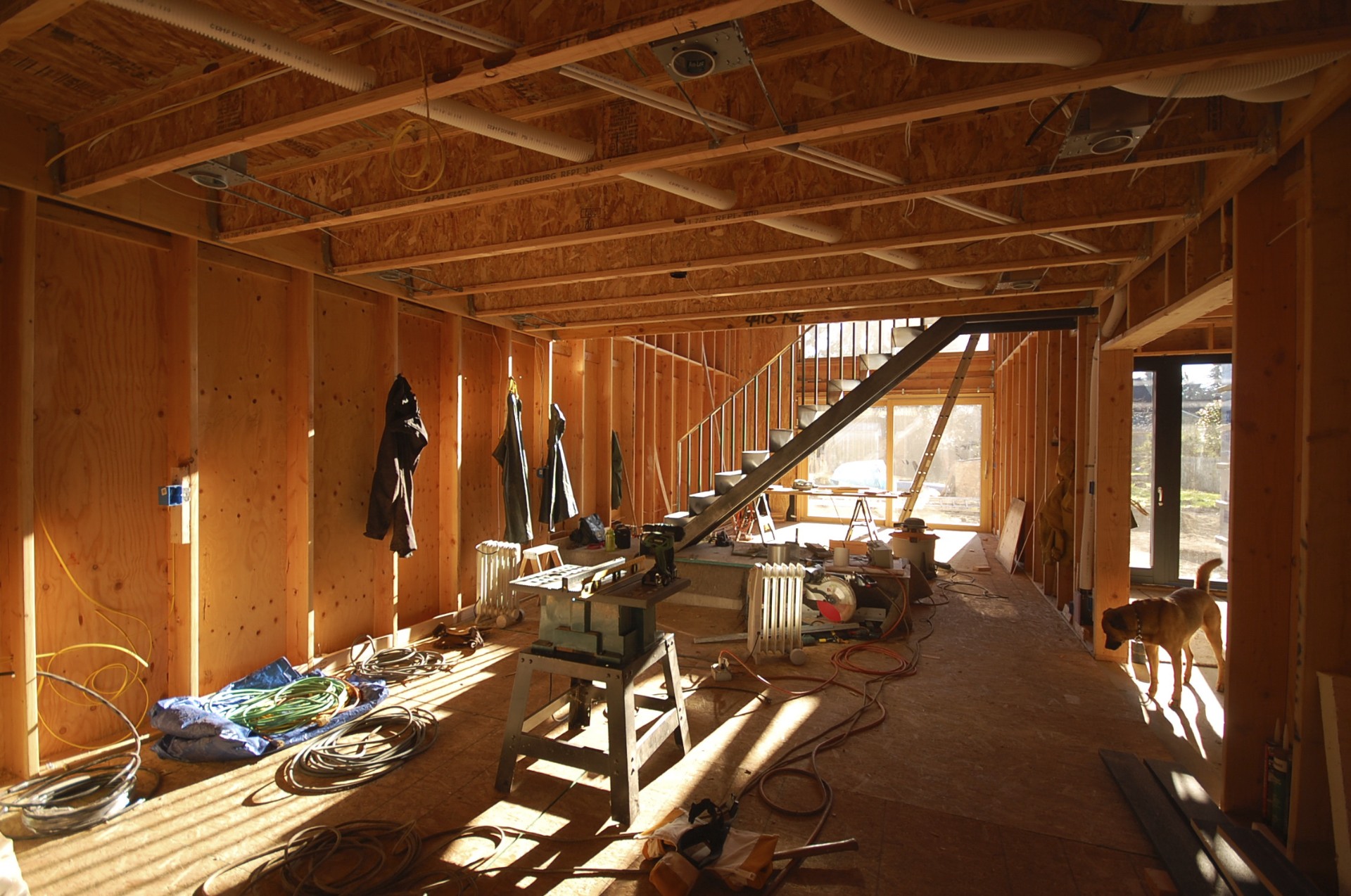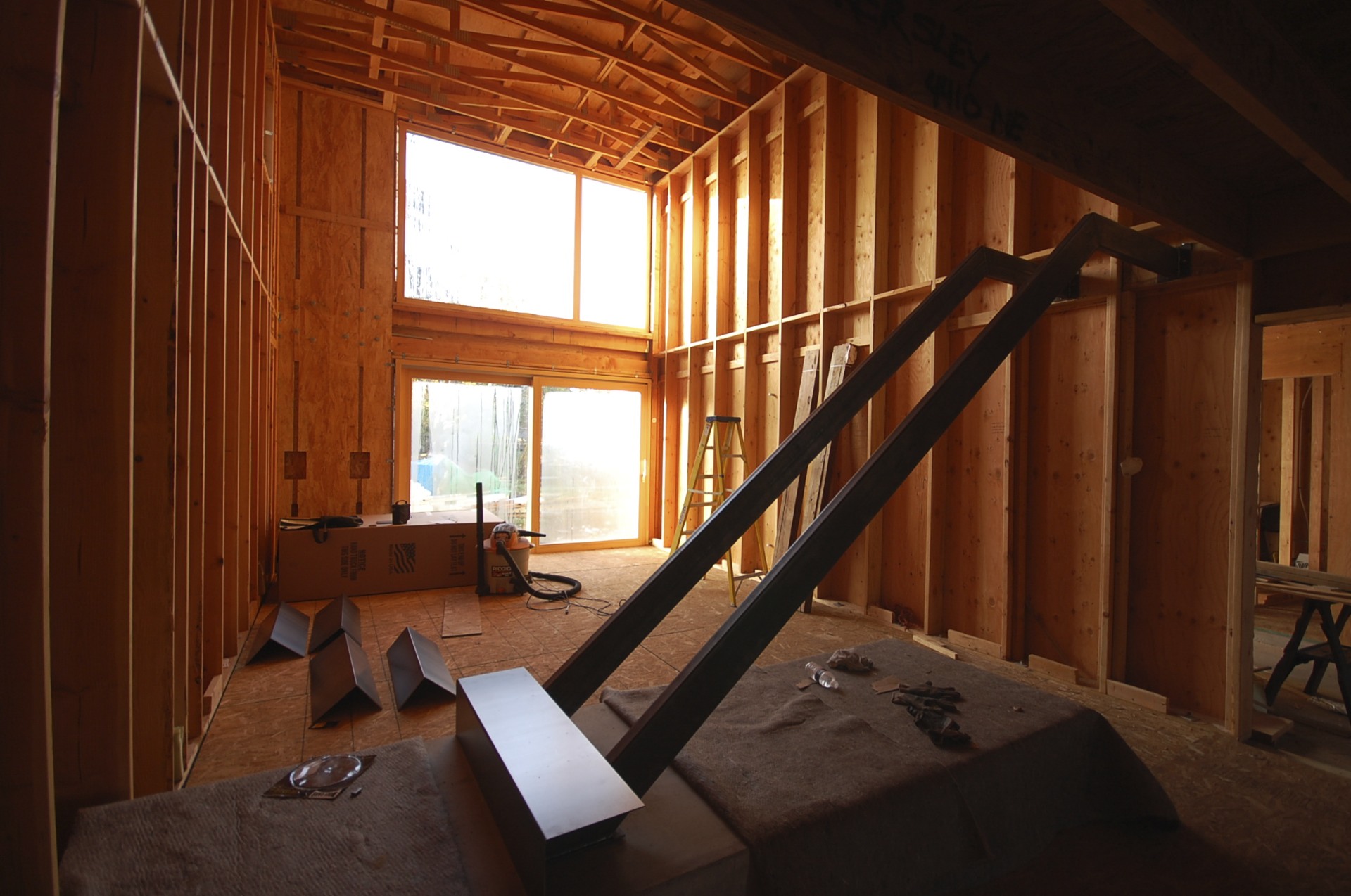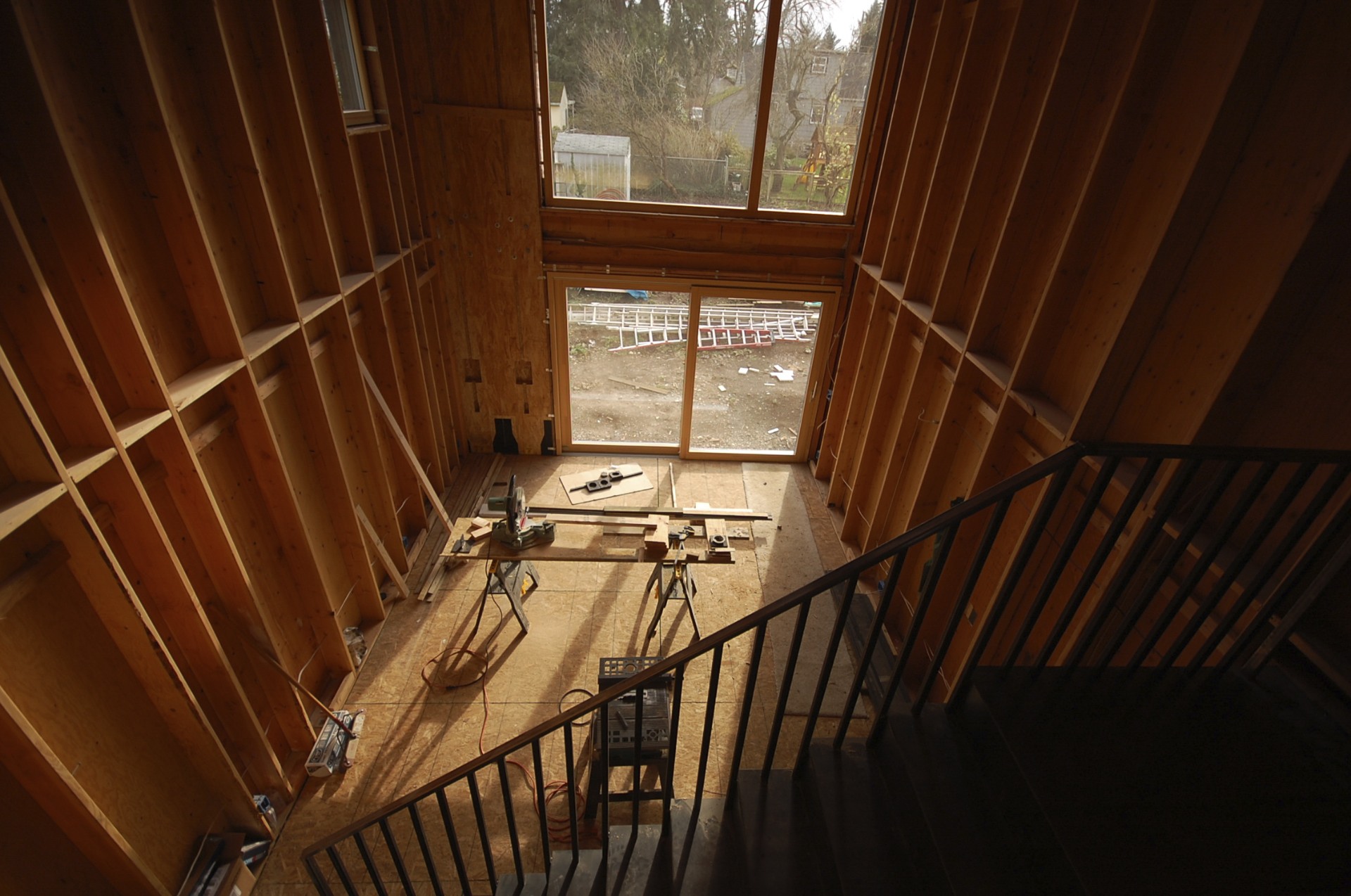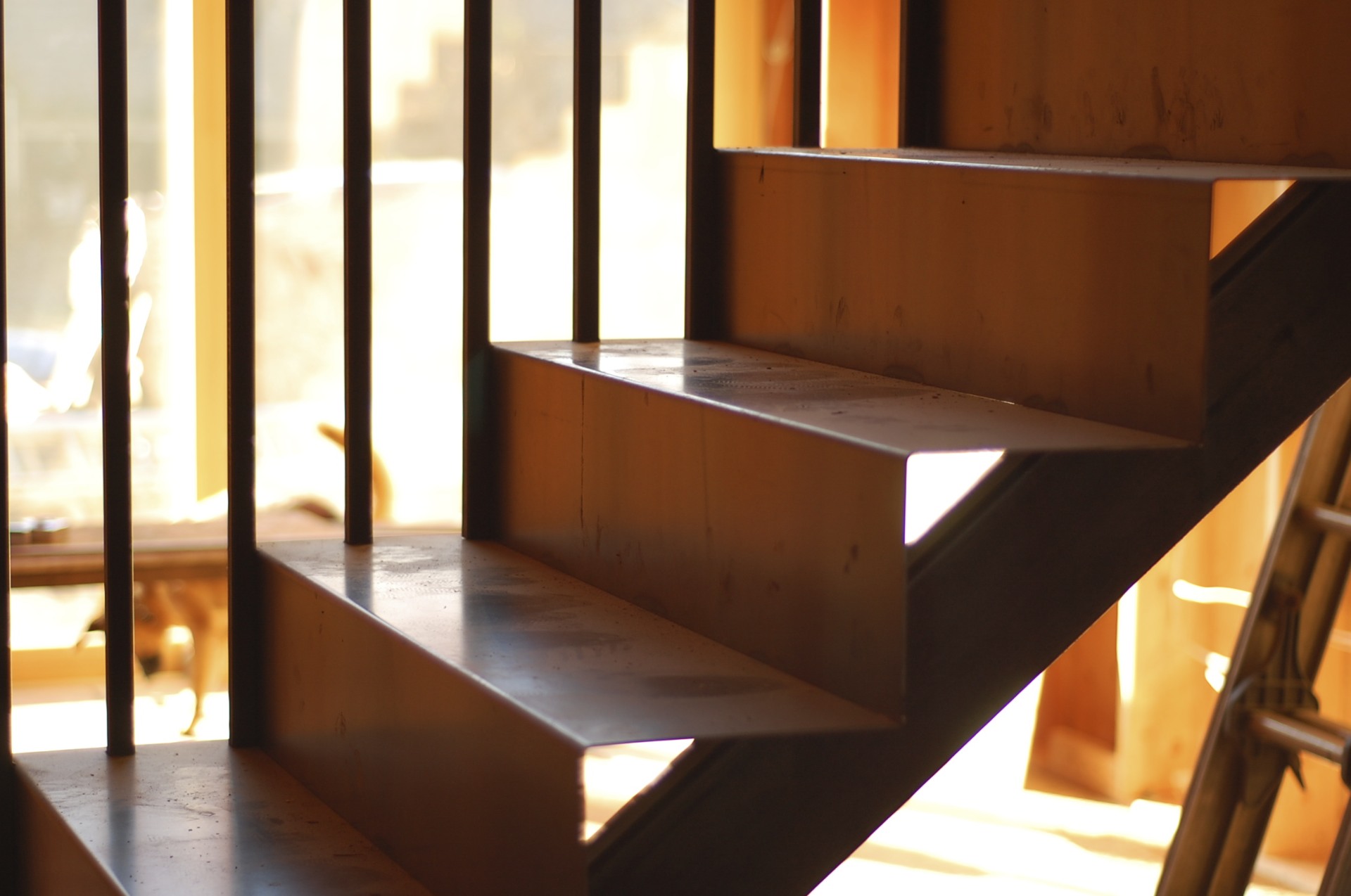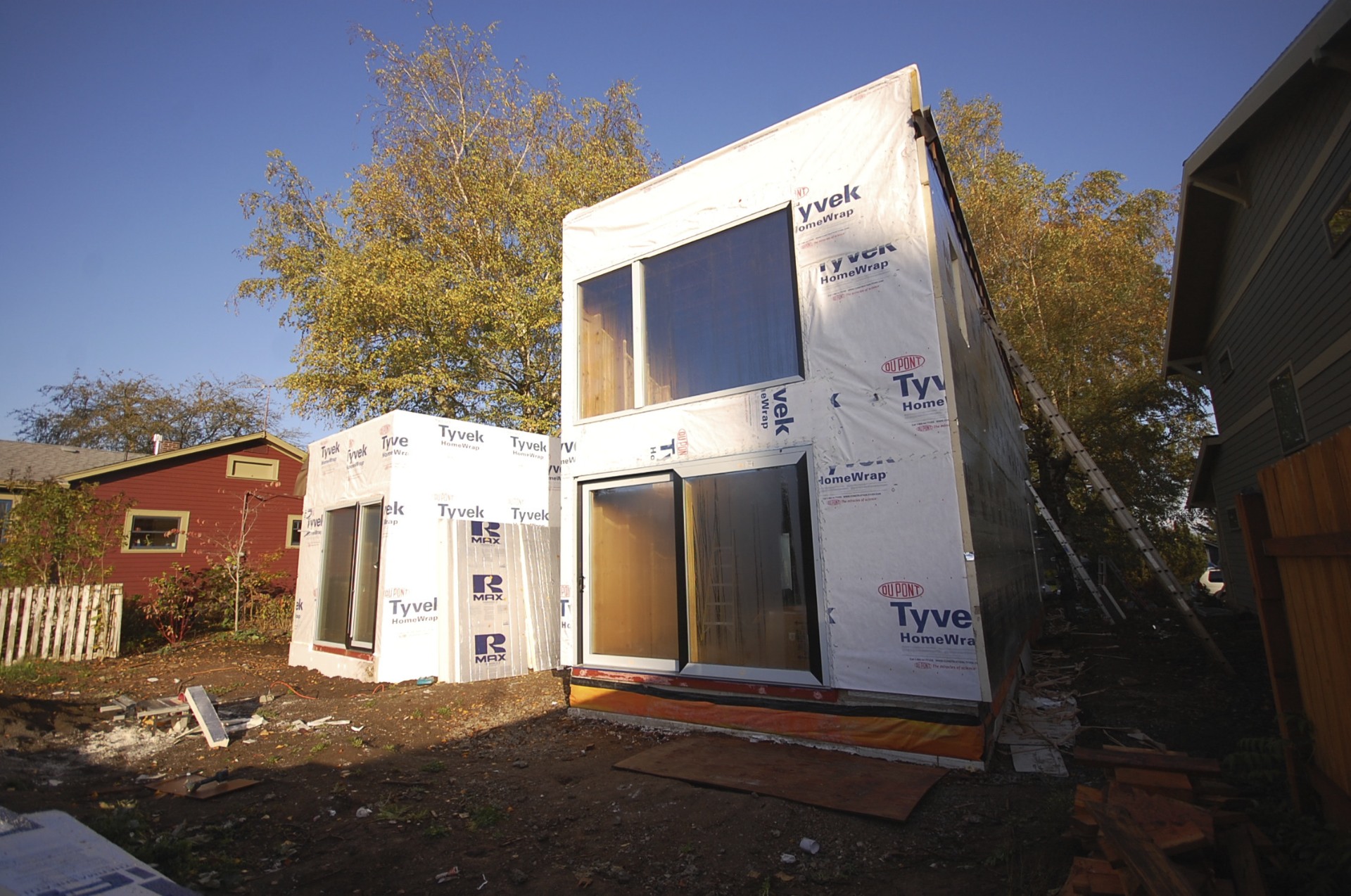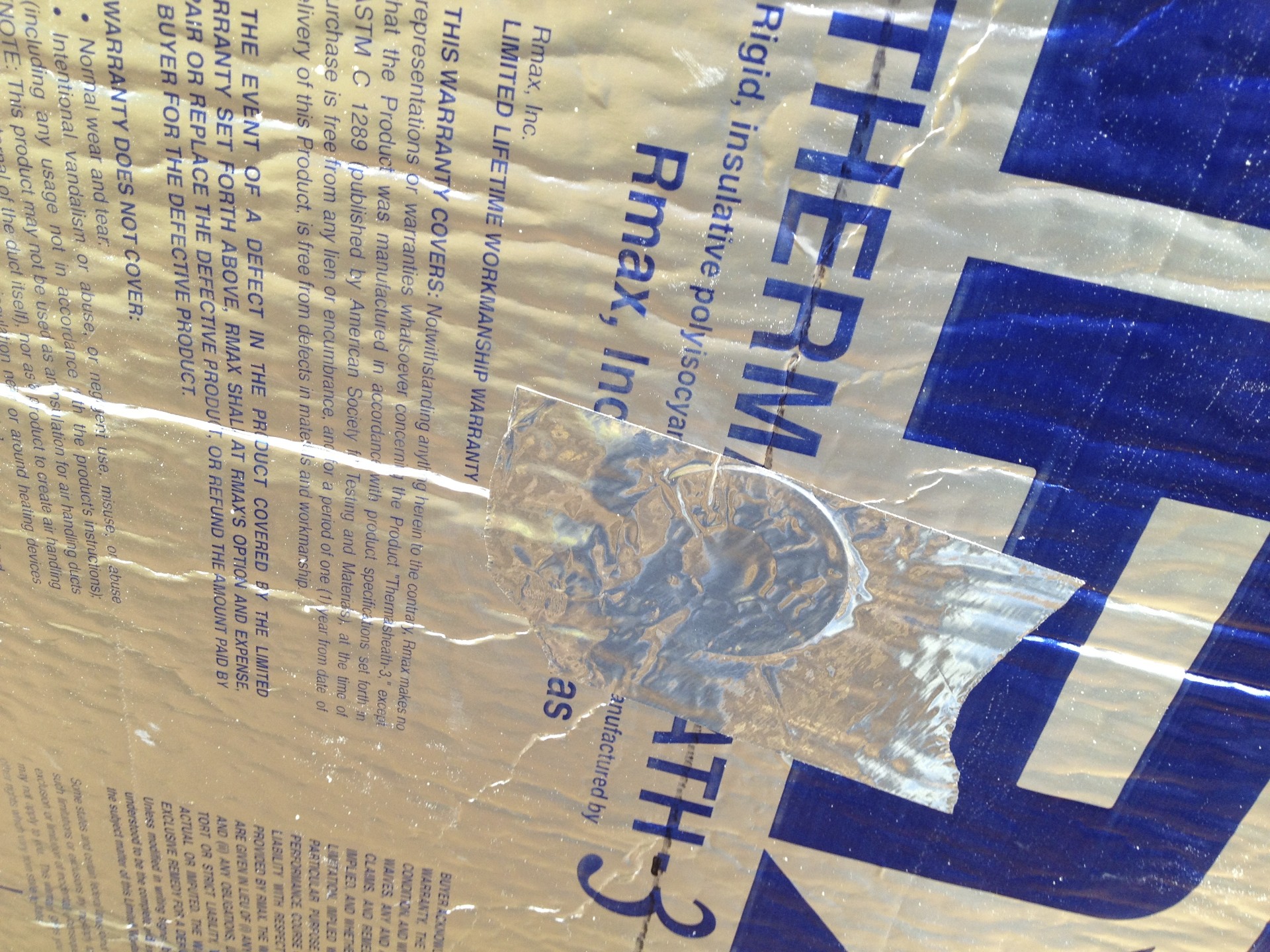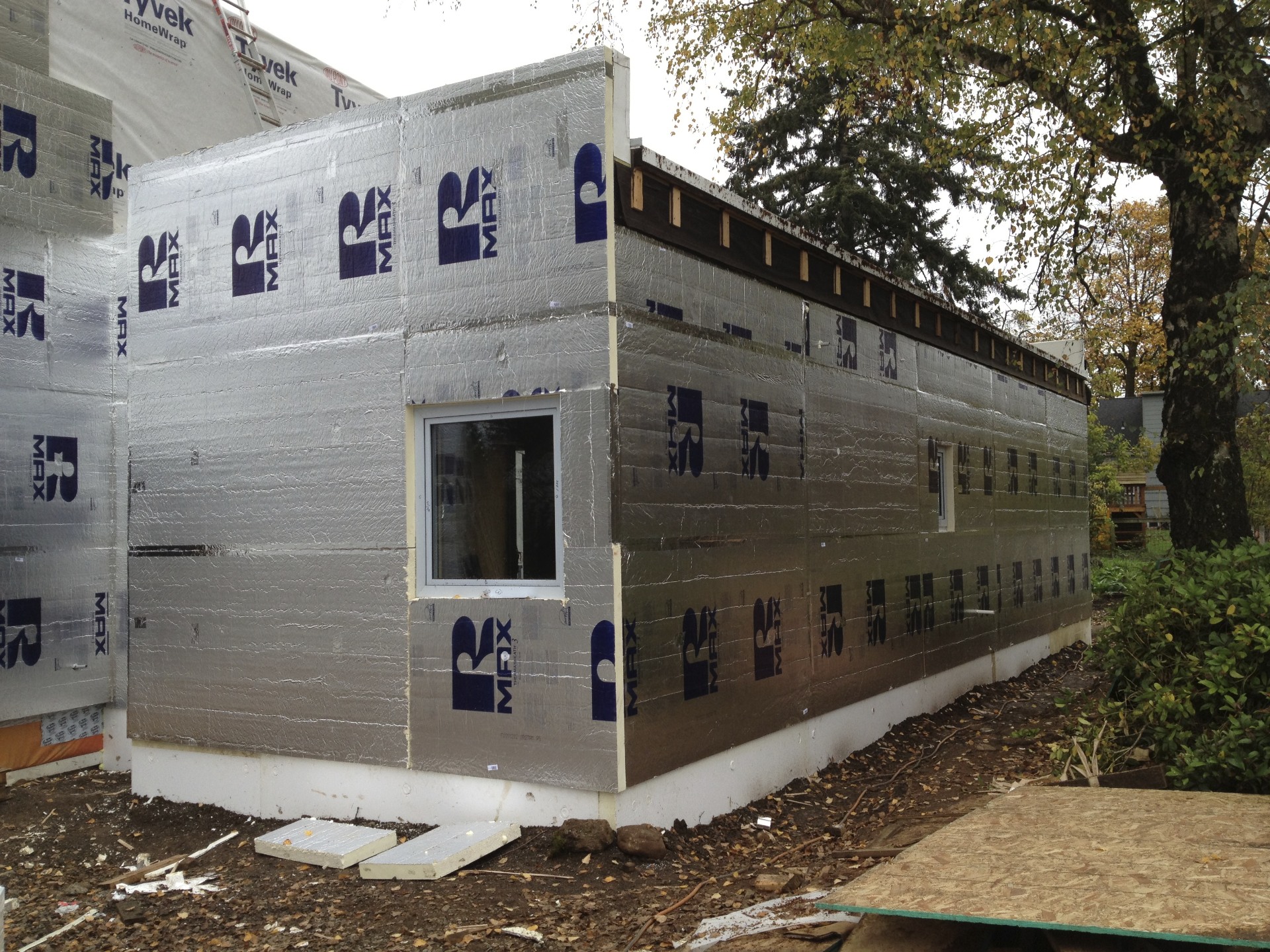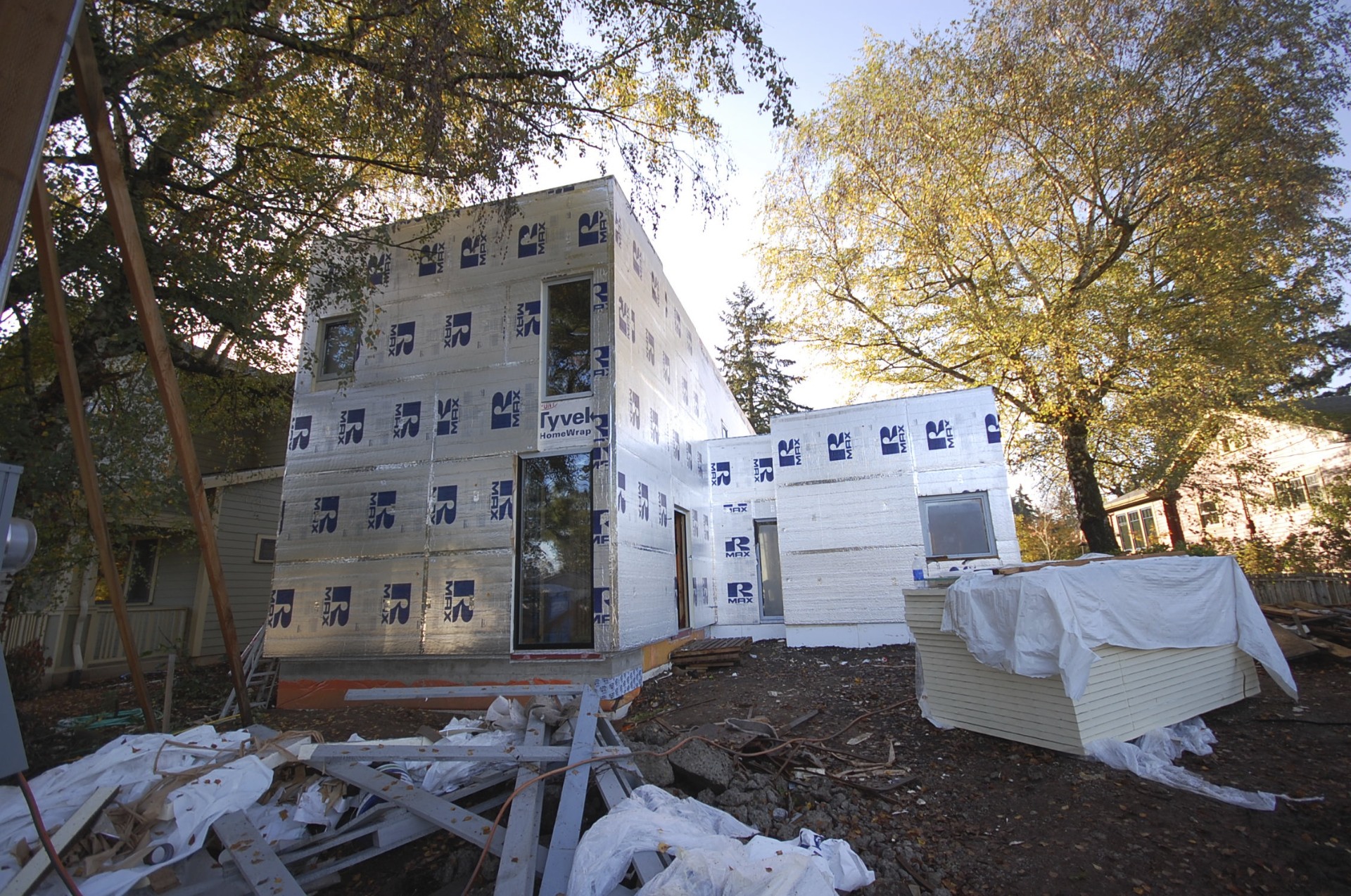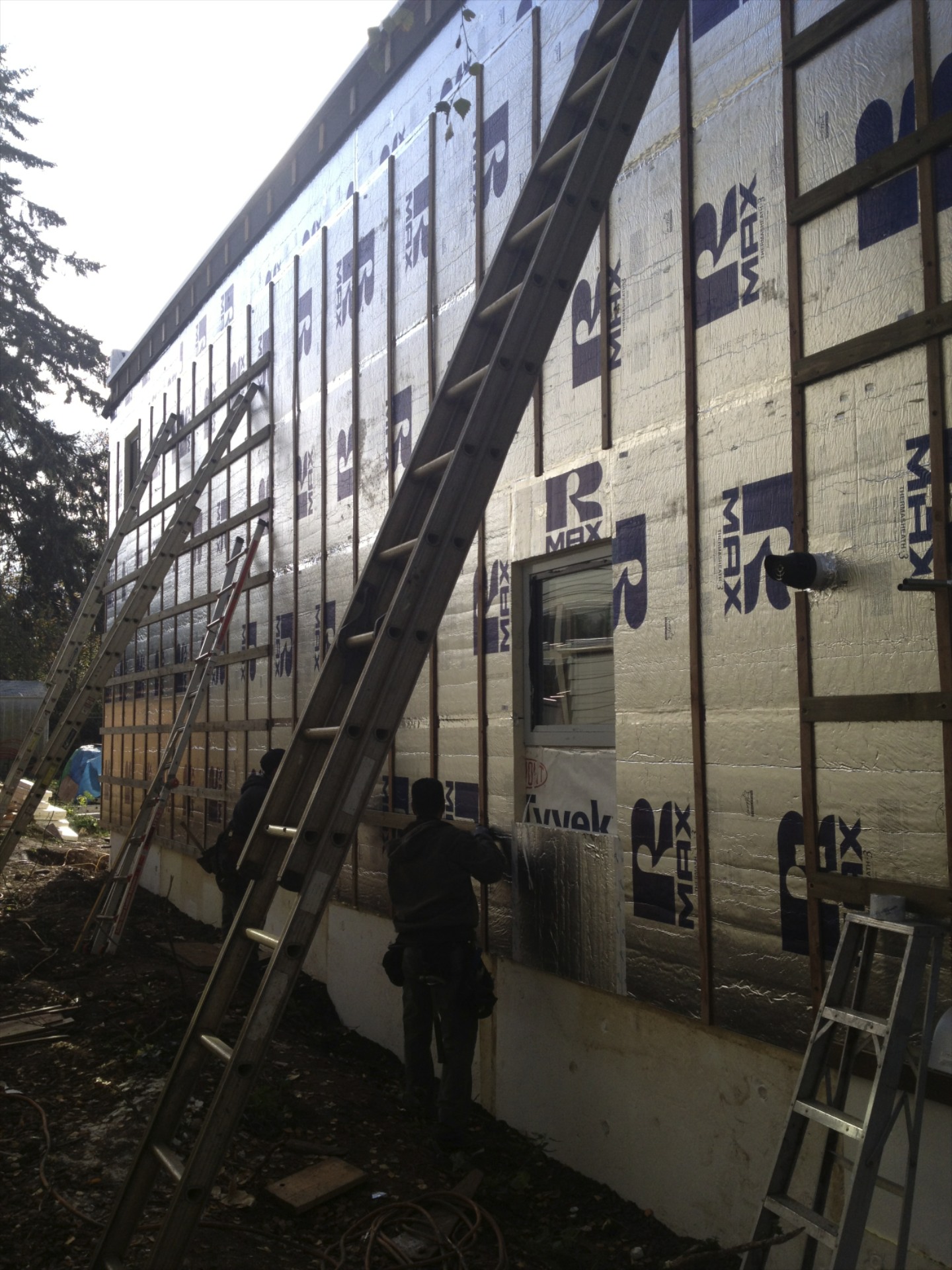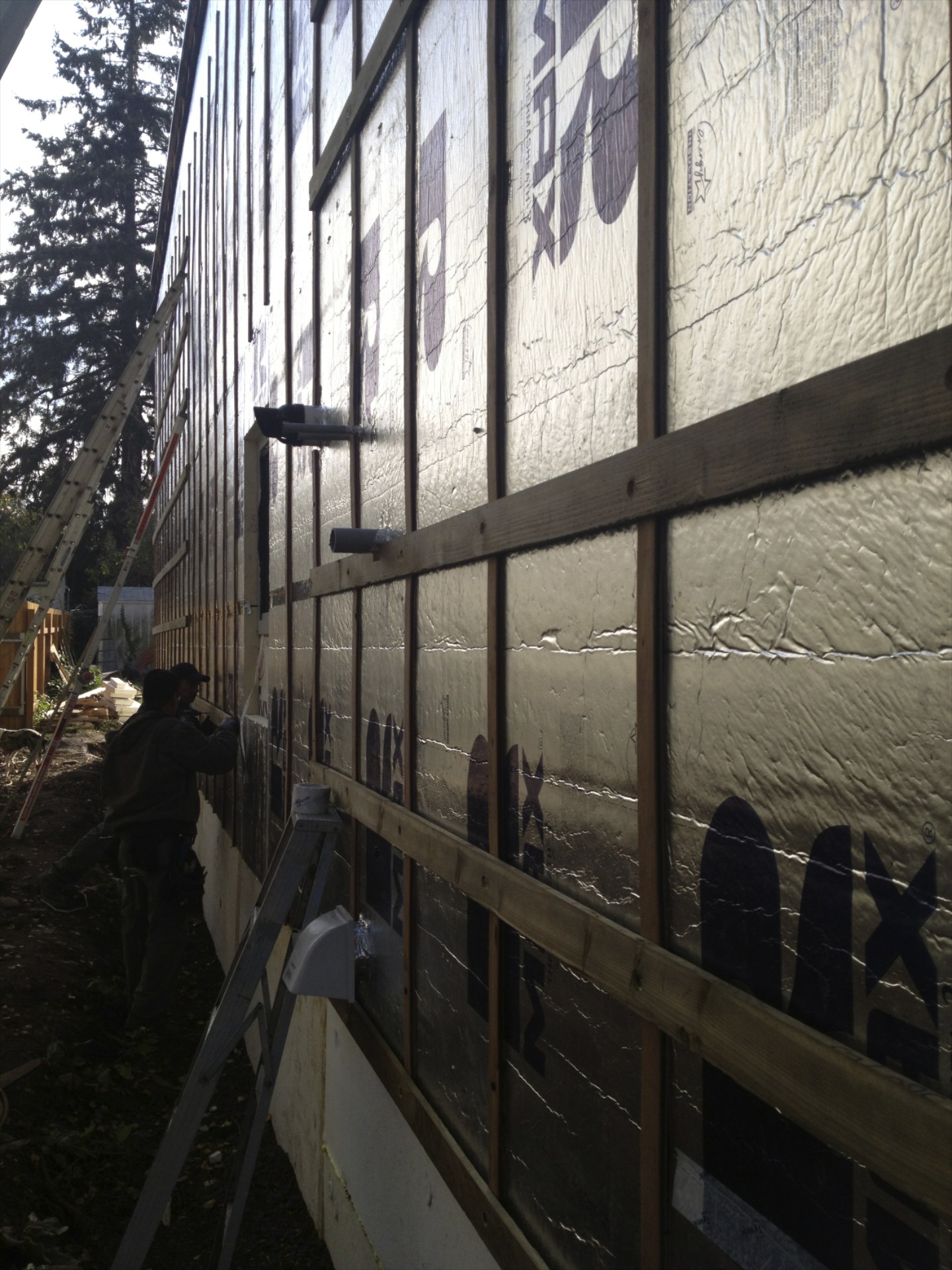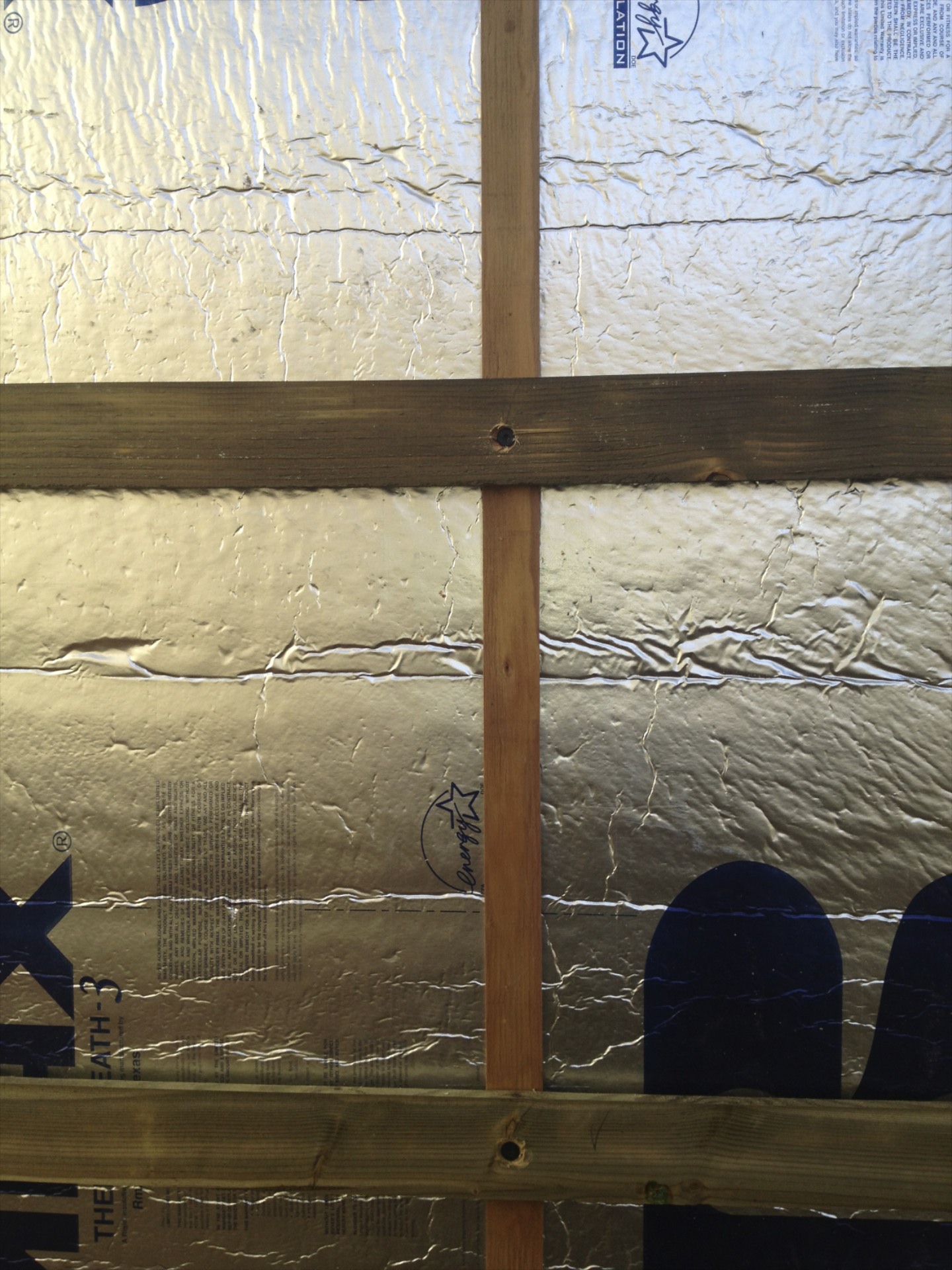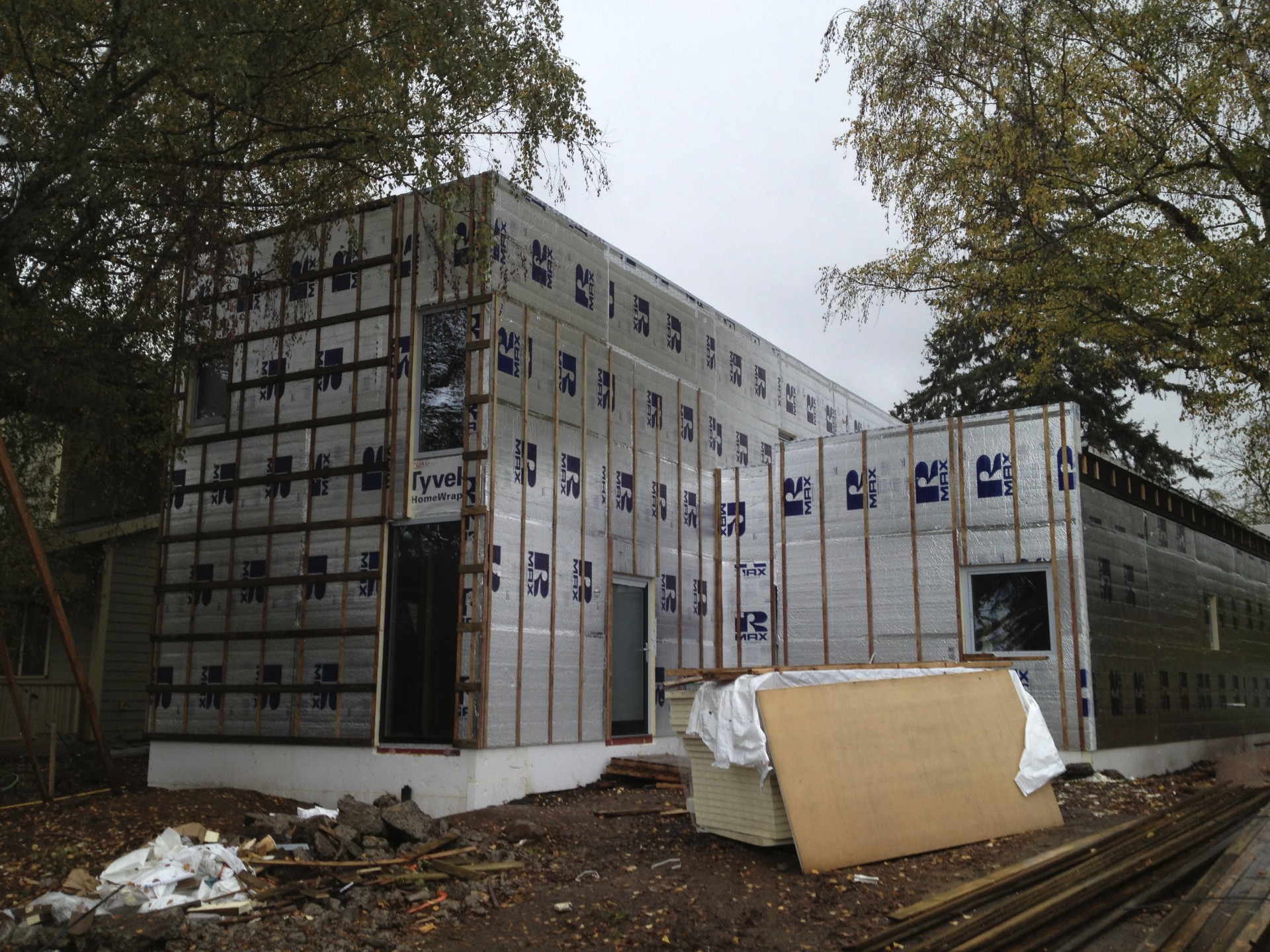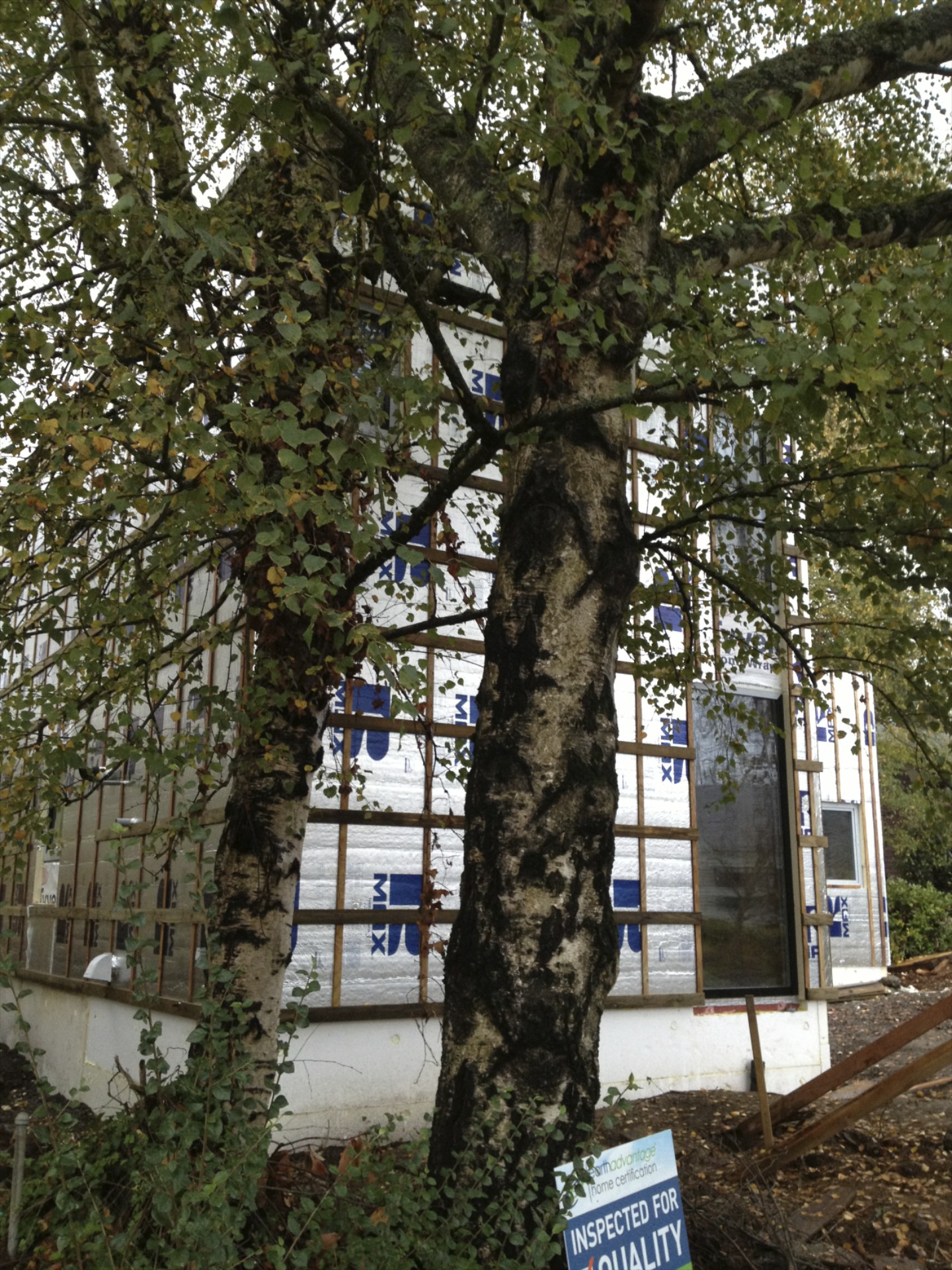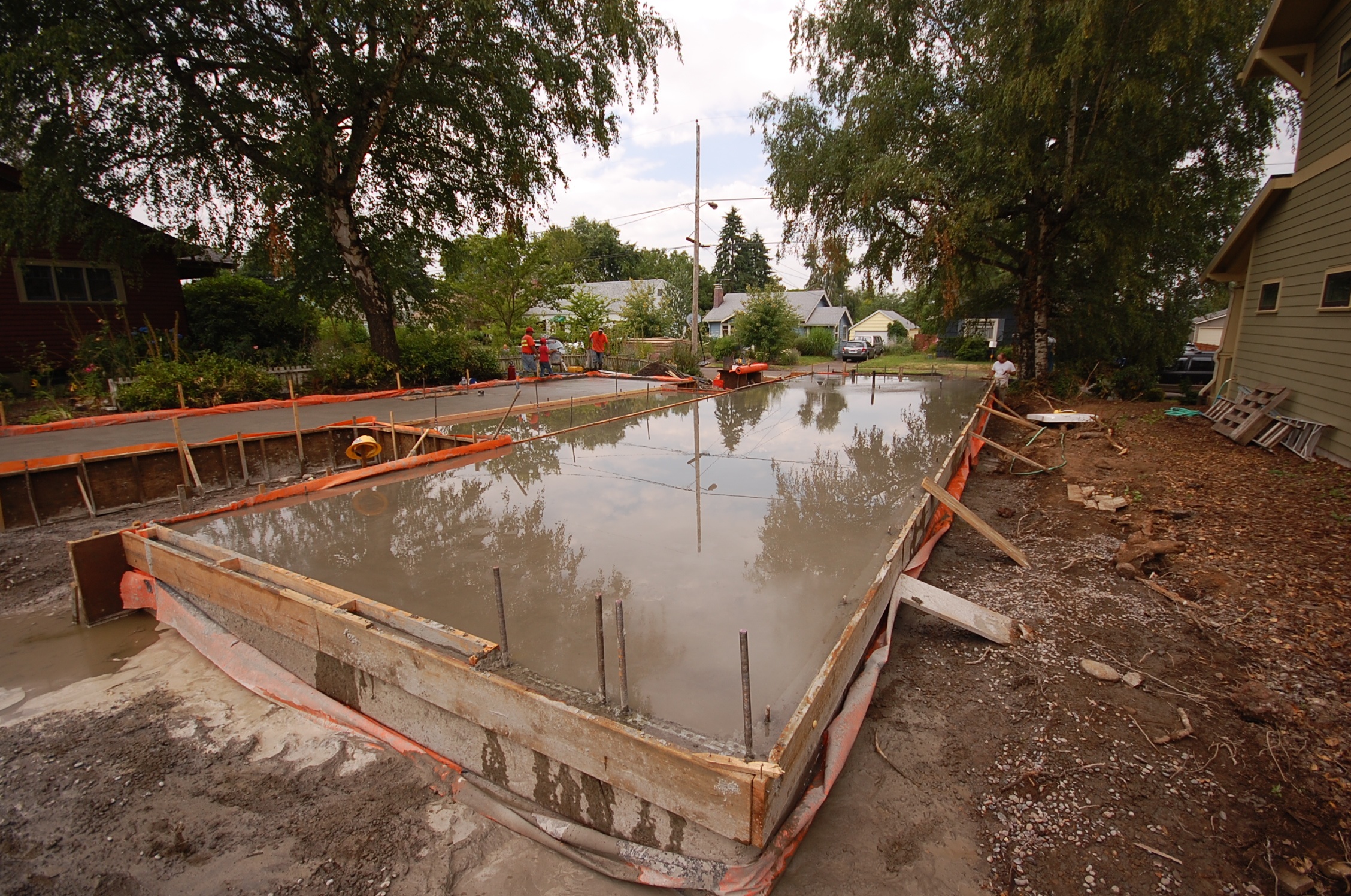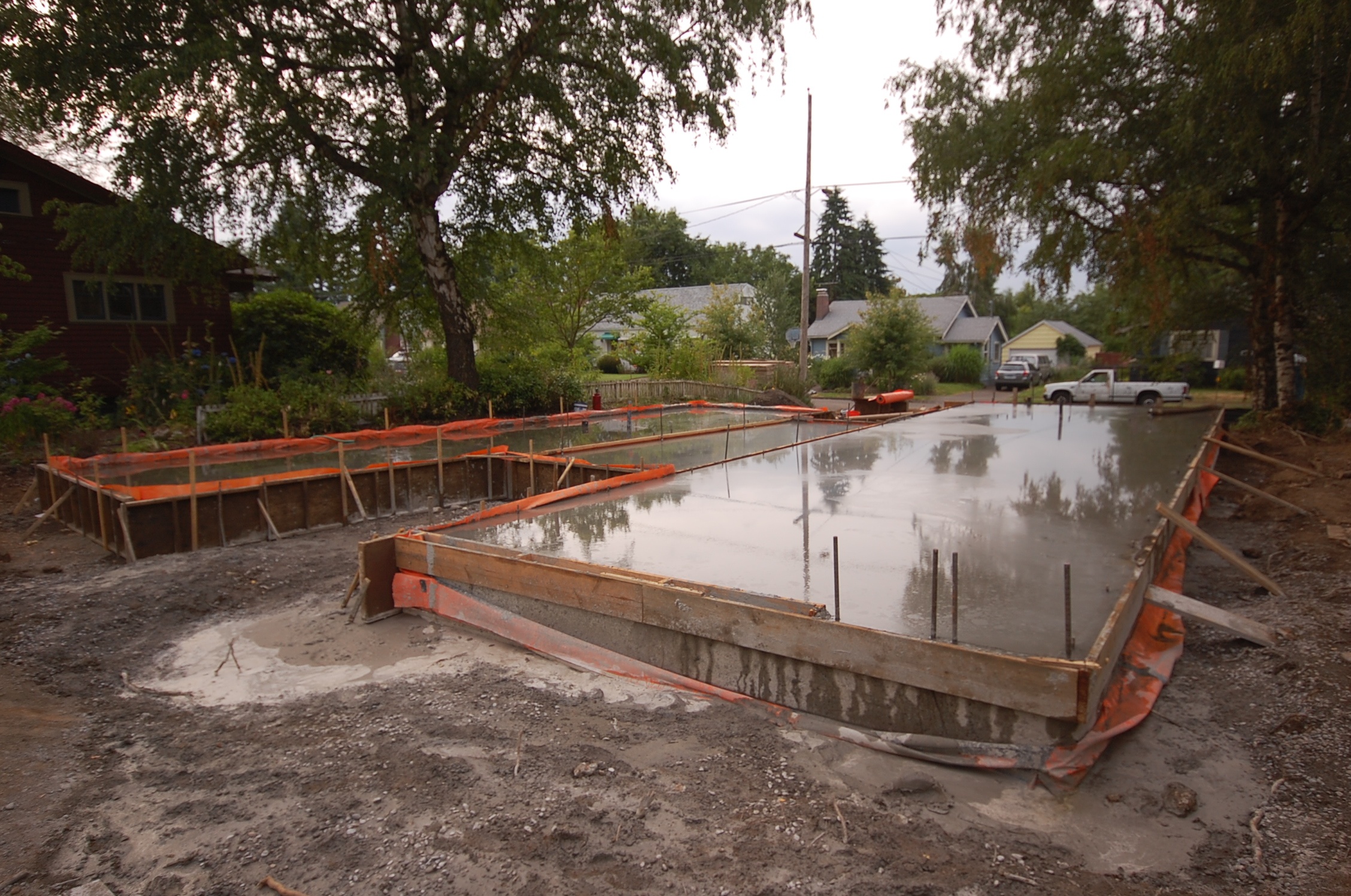really this post should be titled:
"selecting a heating system for a small passivhaus in portland oregon"

with an extremely low heating load, a passivhaus makes most typical residential heating systems unnecessary and unsuitable in terms of size and cost (this includes gas forced air furnace, ground source heat pump, and hydronic radiant heating). for skidmore passivhaus (1965 sf house /1680 sf treated floor area), the peak heating load per PHPP was estimated to be 5,657 btu/hr (at a design temperature of 32deg F). as an example, a small wood stove might produce about 20-30,000 btu/hr when running hot, far too much from a single point source in a passivhaus. in addition, providing fresh air for combustion and sealing all the penetrations creates complications, plus we frequently have no burn restrictions during our coldest winter days. a very small gas furnace still produces about 30,000 btu/hr, and delivers warm air at a higher velocity than is really comfortable. both systems could easily overheat a small passivhaus and each have their pros and cons. while gas here is still cheap and the electric grid nationwide is pretty dirty, most of our electricity in the northwest is generated by hydro and is clean and generally considered renewable.
so for our small passivhaus in portland, we considered the following all electric options:
Electric Resistance Heating
Pros
- very low first cost and simple to install (under $1k installed)
- easy to zone and control individually
- no maintenance
- silent (radiant or convection type)
- ok aesthetic (not great though)
Cons
- inefficient compared to heat pump (COP 1)
- difficult to meet PH with all electric energy sources
- not great aesthetic

Ductless Mini Split Heat Pump
Pros
- high efficiency (COP 3:1 or greater)
- ability to provide cooling
- variety of sizes starting at around 9000 btu/hr
Cons
- higher first cost (roughly $4k - $5k installed for 1 head with 1 outdoor unit)
- requires open plan / poor distribution to closed rooms
- difficult to zone (add roughly $2k for additional head)
- fairly unpleasing aesthetic (add $500 for slightly better looking floor mounted head)
- often requires some electric resistance heating as supplement
- ability to provide cooling means increased energy consumption (if cooling used)


Ducted Mini Split Heat Pump
Pros
- high efficiency (slightly less than ductless mini split)
- ability to provide cooling
- pleasing aesthetic / discreet (concealed ductwork)
- good distribution (ductwork required)
- variety of sizes starting at around 9000 btu/hr
Cons
- higher first cost (roughly $7k installed)
- requires space to locate concealed unit and run ductwork
- ability to provide cooling means increased energy consumption (if cooling used)

Heating Skidmore Passivhaus
at skidmore passivhaus we elected to use electric resistance wall mounted heaters. in our climate mechanical cooling seems like an unnecessary and wasteful luxury, and we frankly did not want it at all. instead we opted for operable exterior shades on the large south facing windows to significantly reduce summer heat gain. combined with well placed operable windows + doors and a nice amount of exposed thermal mass, the house stays extremely comfortable even during the hottest days of the summer.

although the improved efficiency of a heat pump was (and still is) extremely appealing, we struggled with the significant additional cost, the appearance of the ductless heads, and the difficulty in zoning. for the money saved installing the electric resistance heaters (we spent under $1k total) we were able to install a decent sized roof mounted solar PV array. had we not built to passivhaus, we would not have considered this approach.

we installed a total of 4 individual convection heaters made by Convectair ranging from 1250 watts - 1750 watts each. these convection heaters don't have a fan so they are completely silent. while there is an option to connect the heaters and control them from a single programmable thermostat, we opted to keep them individually controlled for maximum flexibility. without the programmable thermostat we have to adjust each heater daily, but this has simply become part of our routine and works for us because of our unpredictable schedules.

because the plan is organized essentially as a one bedroom house with a separate wing with individual work spaces, an electric heater in each work space allows for simple control as separate zones. the open living room has one heater, while the remaining heater is in the master bedroom upstairs. because the house is so tight and well insulated, a number of rooms don't have any heating source yet remain perfectly comfortable including the pantry, 'breezeway', main floor bathroom, and upstairs walk in closet. the kitchen, entry, and dining room are open to the living room and served by the living room heater. the master bathroom has only an electric radiant mat under the tile floor.

our total system approaches 20,000 btu/hr (5750 watts x 3.413 btu/hr/watt), but it is distributed throughout the house and we rarely have all of the units running at the same time. after our first winter, the house stayed extremely comfortable as expected with only a few degrees variation between the warmest and coolest rooms. during our record cold weather this winter (almost 3 weeks with lows dipping into the teens and cloudy snowy skies for much of it) the living room heater struggled a bit to raise the temperature very quickly when setback at night. in hindsight that heater was probably undersized considering that it serves a huge portion of the house - the 2 story living room (with large areas of glass and lots of mass), dining room, kitchen, entry, breezeway, and pantry. we are considering adding a small additional heater to the living room area just for those extreme cases.

while many may question our decision to use electric resistance heat and a PV array, for our super low load passivhaus and particular situation it seemed to make sense. overall we are pleased with the system although it is definitely not sophisticated, super efficient, nor great looking. while we don't have individual data loggers installed yet to track electricity used for heating specifically and to monitor indoor temp and humidity, we will be posting general information about our overall energy consumption this summer documenting our first year of living in the house. hopefully we will begin logging data for year two.

we'd love to hear your thoughts, suggestions, corrections, etc. as we continue to ponder appropriate systems for some of our new projects currently in design.
www.insituarchitecture.net
